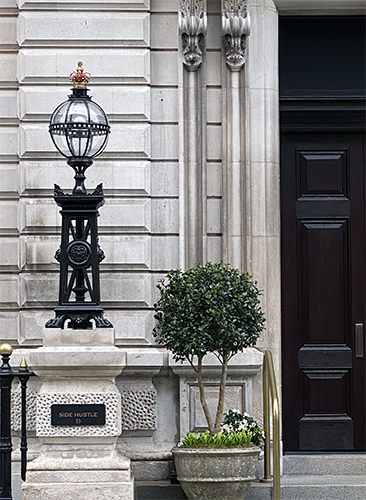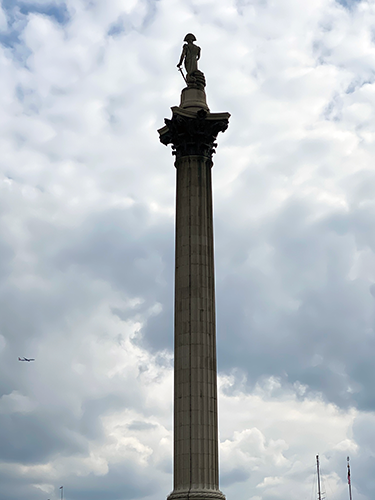Artful Epoch Signs, Lights and Fixtures
Architectural Art
Artful structures bringing culture to life.
Architecture is a combination of Utility and Art reflecting the Society’s Historic appreciation of itself , its achievements and wealth in a rather public setting.
Elements In This Section have two sub-sections, Architecture and Architectural Fixtures .
Art of Life
The Art of Everyday Life through everyday objects in everyday environments but not exactly Andy Warhole’s Campbell soup painting … we are a little bit more selective and posh darlings 🙂 in our approach to avant garde Art.












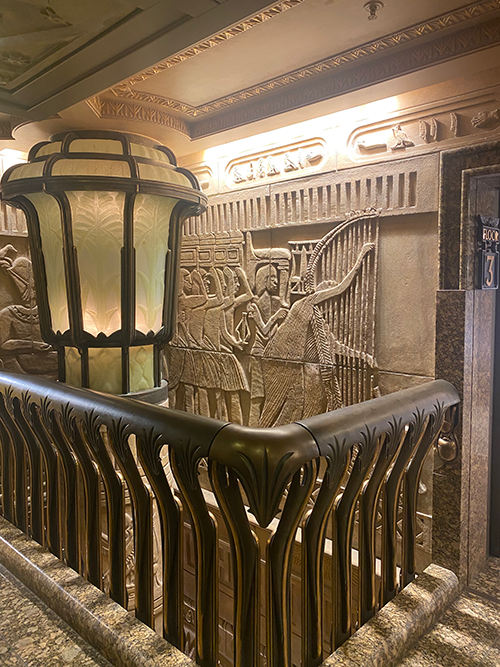


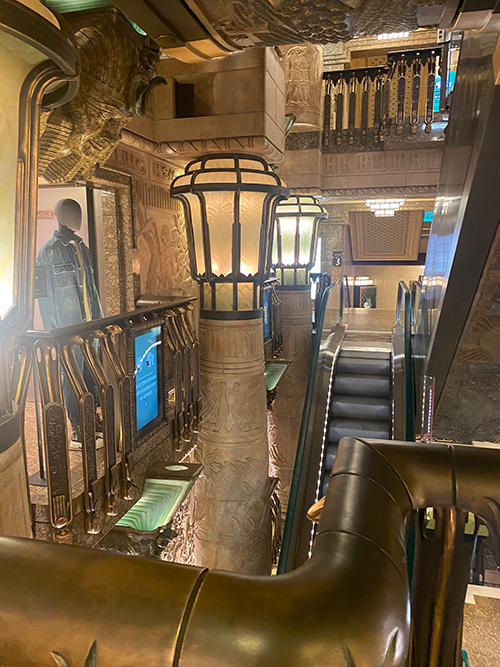
UK in Focus
Art and Architecture In the UK – The Times, The People, The Society
Historical Portraits
Period Images and fairly accurate reconstructions that convey the essence of past times with character and emotion, largely elitist and European centric to include Russia and Middle Eastern to include Iran and North Africa .
1119 A.D. Emperor John Komninos 2nd and Irene of Hungary (Ο Ιωάννης Β’ Κομνηνός και η Ειρήνη της Ουγγαρίας)
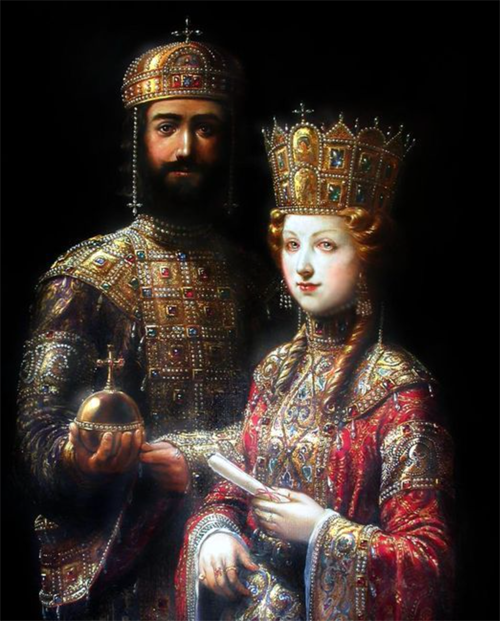
530 A.D. Augusta (Queen) Theodora of Byzantium (Αυγούστα Θεοδώρα)
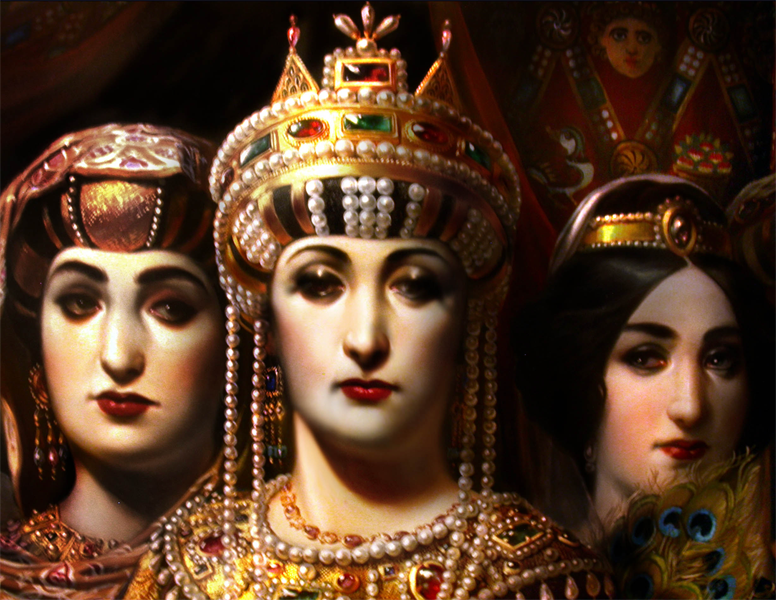
Augusta (Empress) Theodora 497-548A.D. One of the most influential and powerful of the Eastern Roman empresses, albeit from a humble background.
1200A.D. Boukoleon Palace Constantinople (Παλάτι του Βουκολέοντα)



Βουκολέων – Boukoleon palace was the main palace for the Byzantine court until the 11th century, when the Palace of Blachernae was built by the Komnenos dynasty.
1200A.D. Forum of Augustus Theodosius (Φόρος (Πυλη) Θεοδοσίου)

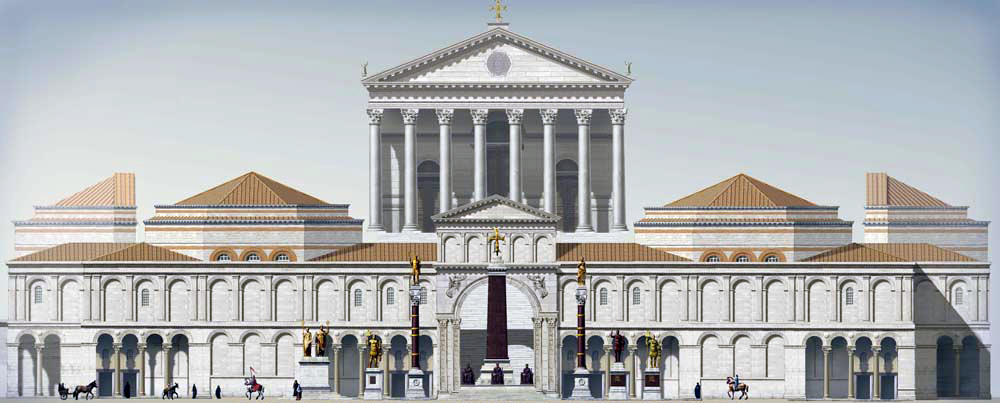
Forum of Augustus Theodosius, Built by Augustus Constantine I and named Forum Tauri (Forum of the Bull) later it was renamed after (Emperor) Theodosius I, in the middle of the forum was a Roman triumphal column erected in honour of Emperor Theodosius I. 400A.D. with additions thereafter.
The forum of Theodosius led to the Philadelphion which was a public square branching into 2 main roads into Constantinople. Built initially in 280A.D. with additions thereafter.
more soon ……
Greek Drachma Banknotes 1841 – 2002
Ελληνικά Χαρτονομίσματα Δραχμής
Greek Drachma ‘δραχμή’ banknotes were the official medium of monetary exchange in Greece from 1841 to 2001 when the currency was replaced by the euro ‘€’ code: EUR
Banknotes are officialy sanctioned artifacts, they provide an insight into the history and culture of the epoch they were in use, nearly always aspirational created by elites they provide an insight into social governance. Banknotes as a store of wealth also act as memorial of enterprise, labour, profits and economic prosperity.
In the interests of art, of appreciating the history and social culture of Europe to which the small nation of Greece is part of, I present here the banknotes of Greece, very many from our private collection, image sizes and valuations (*) are approximate.
It took 370 years of Ottoman occupation before Greece obtained partial independence, the country had flimsy governmental structures and haphazard finances, it was up to the Bavarian Civil servants and the new German king of Greece to sort these, a decree was issued by King Othon in 1841 for the creation of a bank, as the state had scarecely any capital or know how it fell into private citizens to create it, one that took the challenge was Georgios Stavros (formerly chief cashier of the state) who was the first apointed governor of the bank, in 1841 the bank was created as a discount and mortgage enterprise with 5000 shares worth 1000 drachmas each .
The Greek state bought 1000 shares, Nicholas Zosimas bought 500 shares, Jean-Gabriel Eynard bought 300 shares, King Louis of Bavaria (father of Othon king Greece) 200 shares, Konstantinos Vranis 150 shares, Adolf Graf 146 shares and Theodoros Rallis 100 shares. These where of Greek heritage or Philelenes, additionally Rothshild Frères Paris bought 50 shares and Jean-Gabriel Eynard bought 50 shares. Rothchild had extended finance for the creation of the new Kingdom of Greece, the 50 shares bought was to give credibility to the bank.
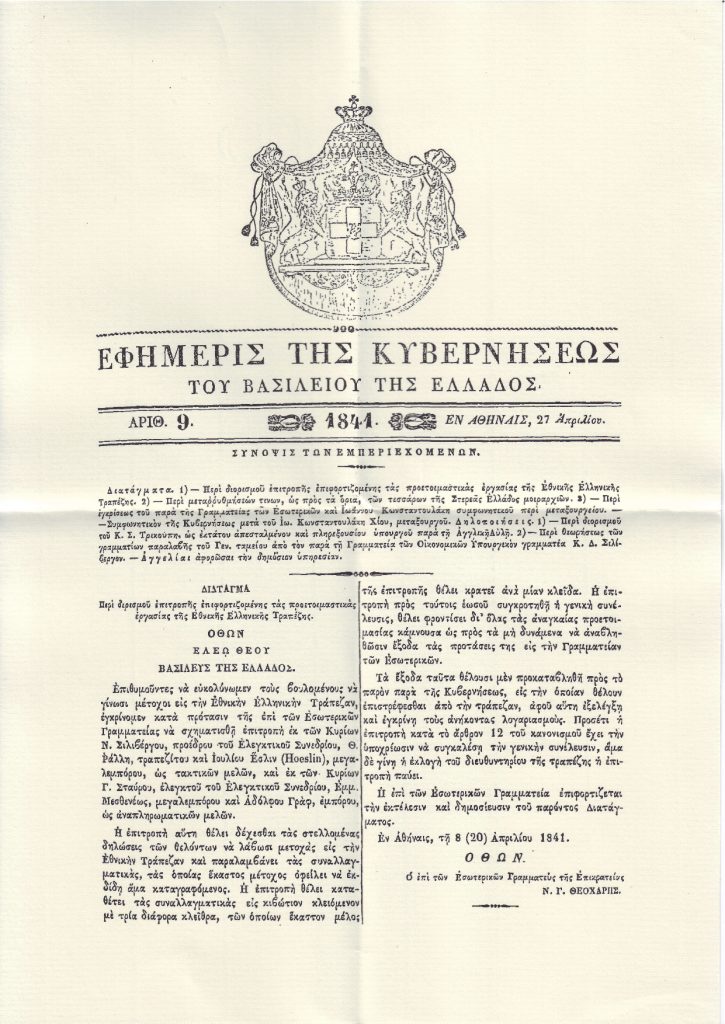
1841-1849 Greek Bank (Later became National Bank)
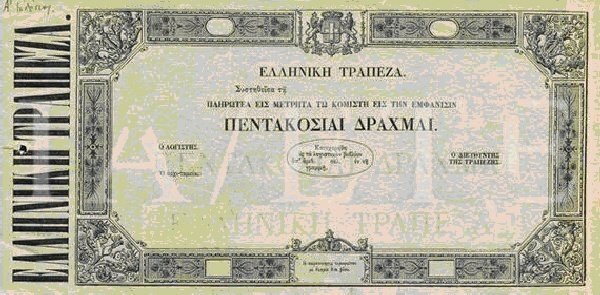
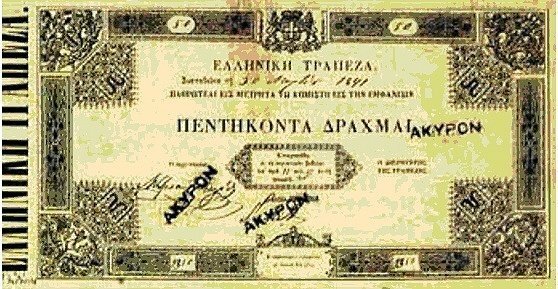
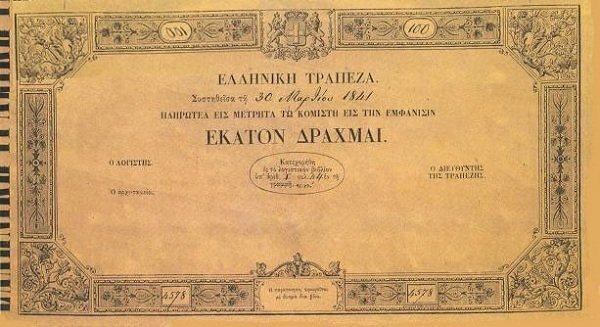

1849 – 1859 National Bank (Εθνική Τράπεζα)
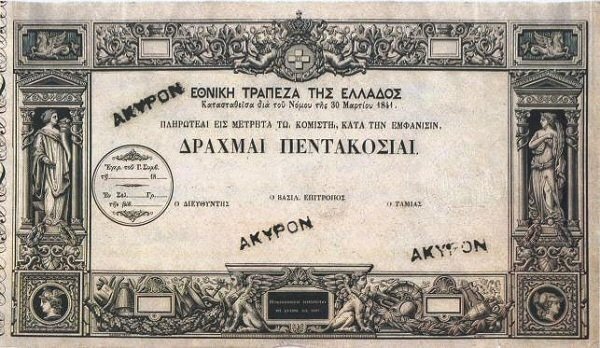
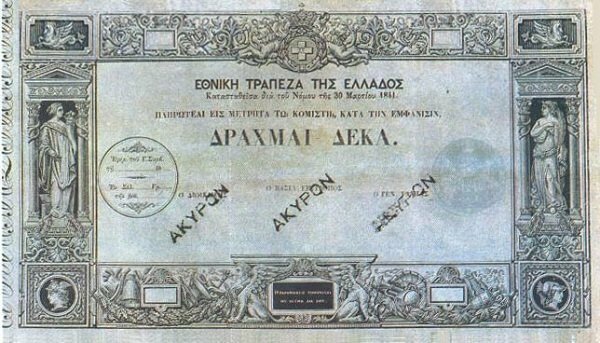

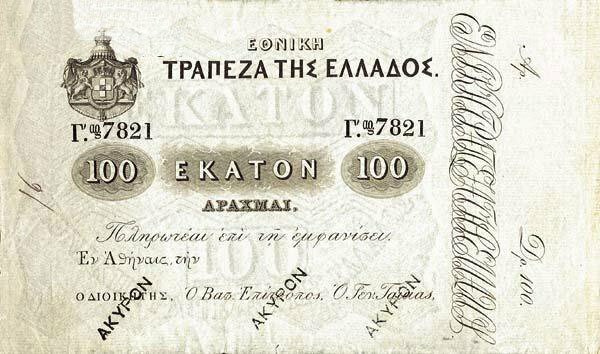
1859 – 1878 National Bank (Εθνική Τράπεζα)

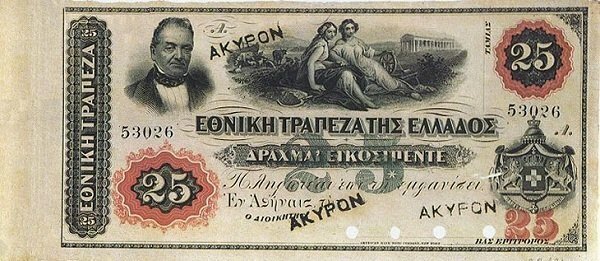
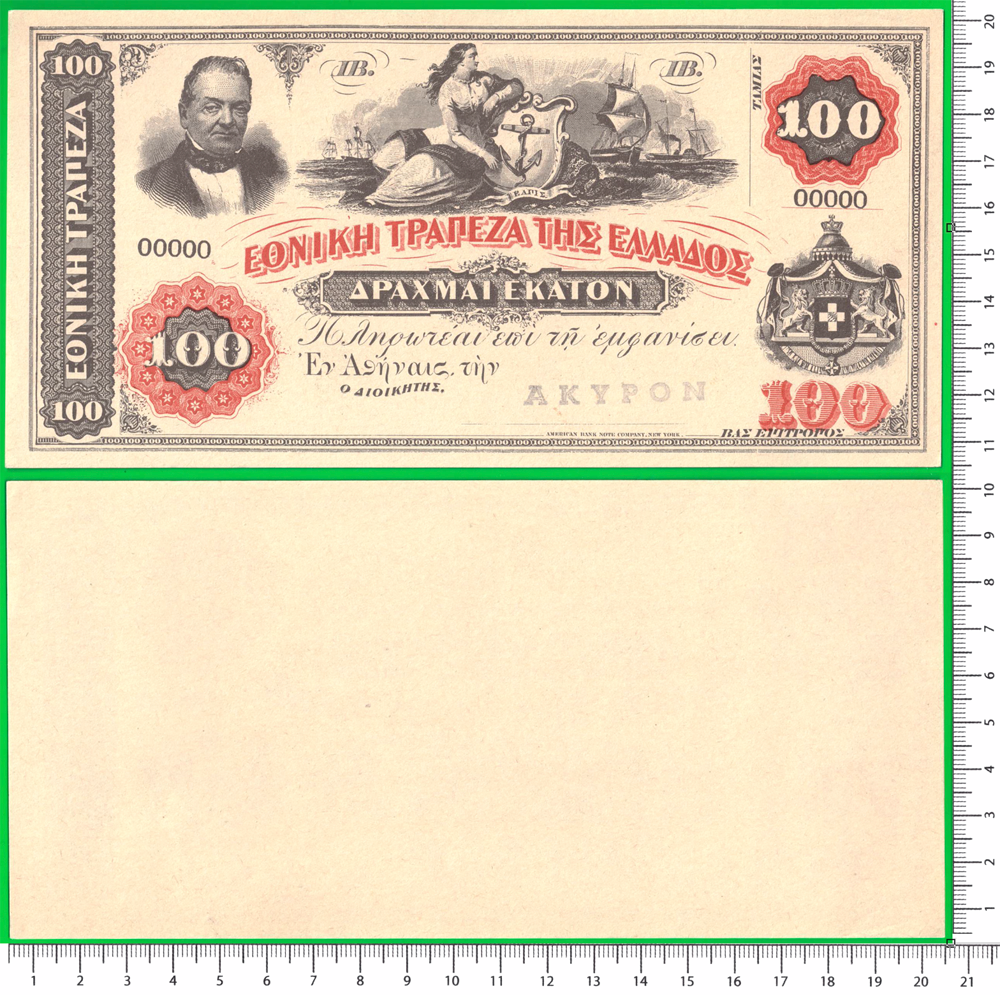
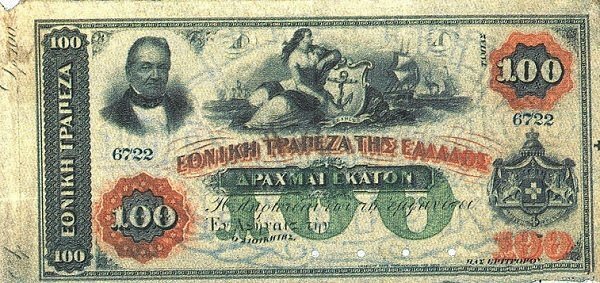


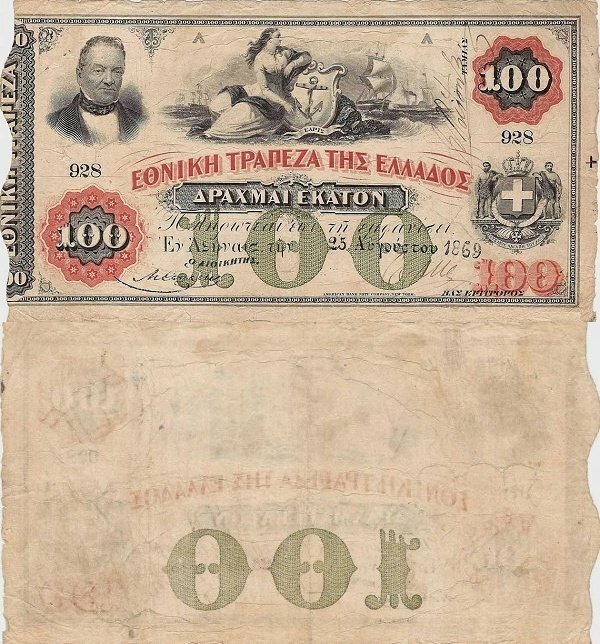
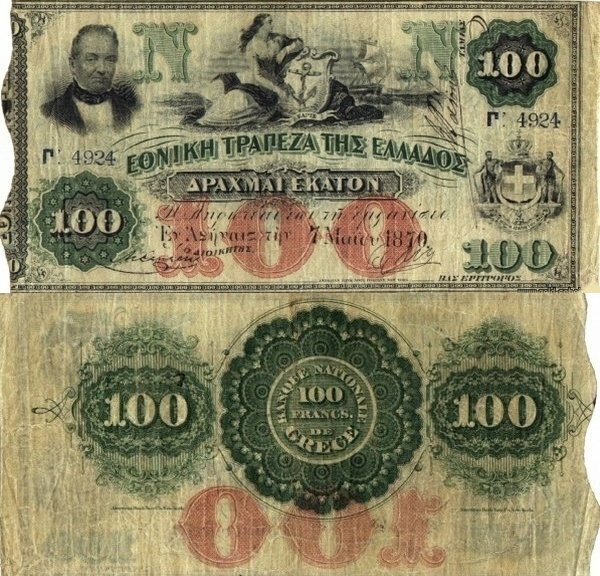

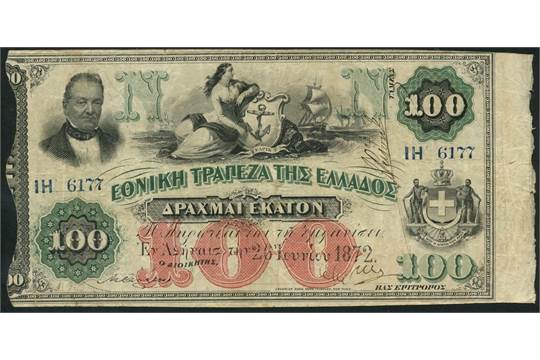
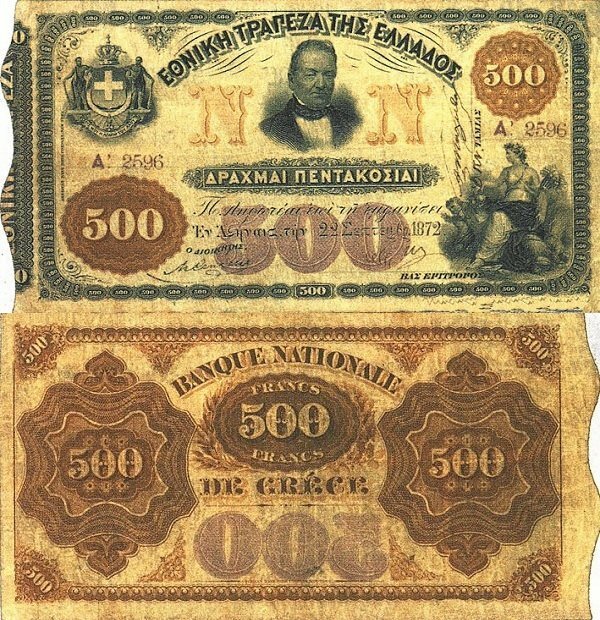
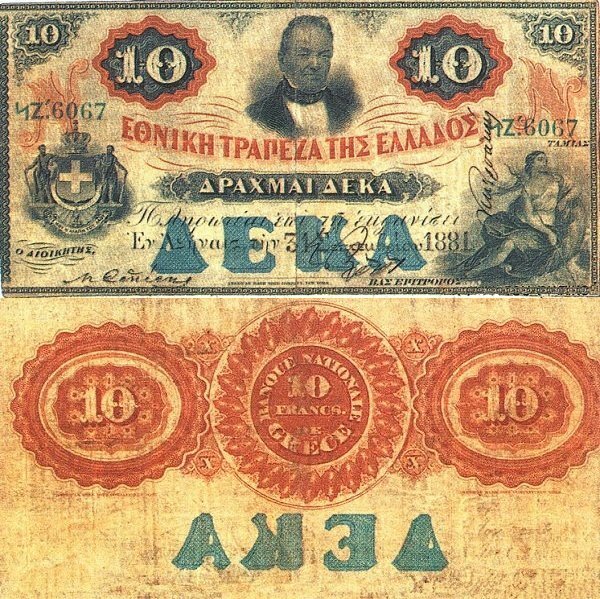
1876 Ionian Bank (Ιονική Τράπεζα)
Ionian Bank was a British overseas Bank Operating in the Ionian Islands before they were incorporated into modern Greece.


1882 – 1888 Ipirothessalia Bank (Τράπεζα Ηπειροθεσσαλίας)
This bank was eventually bought out by National Bank (Ethniki Trapeza)
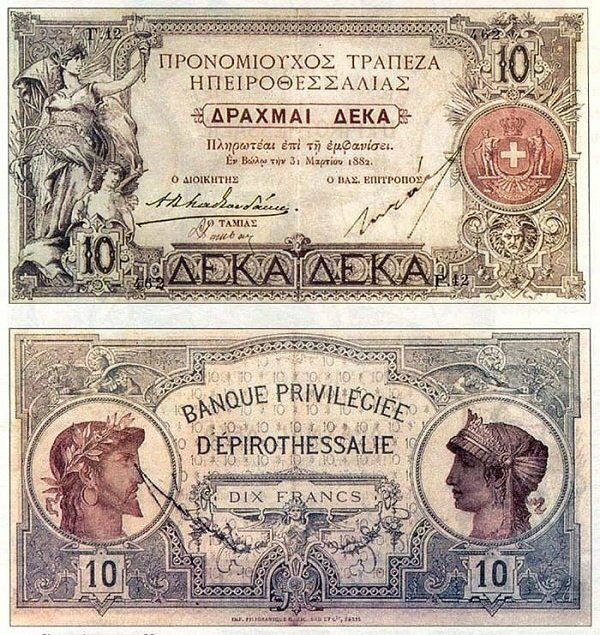





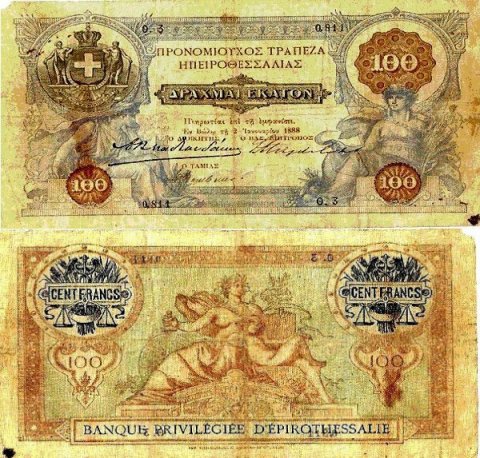

1884 – 1894 Ionian Bank (Ιονική Τράπεζα) 7
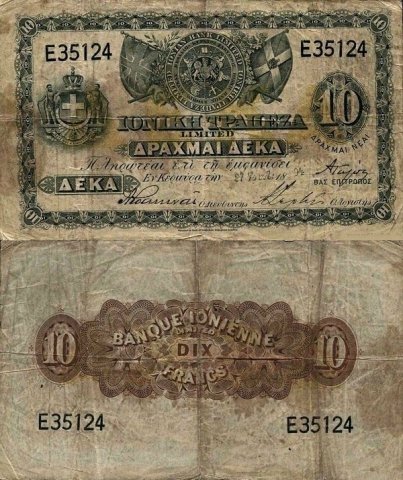
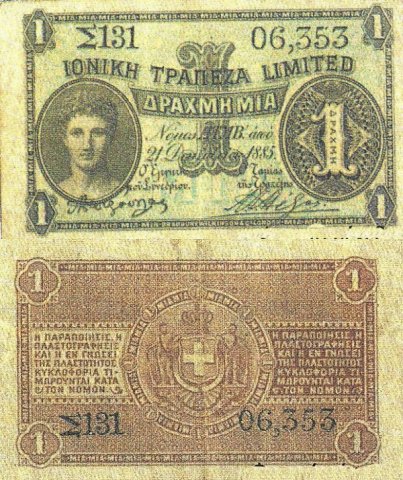
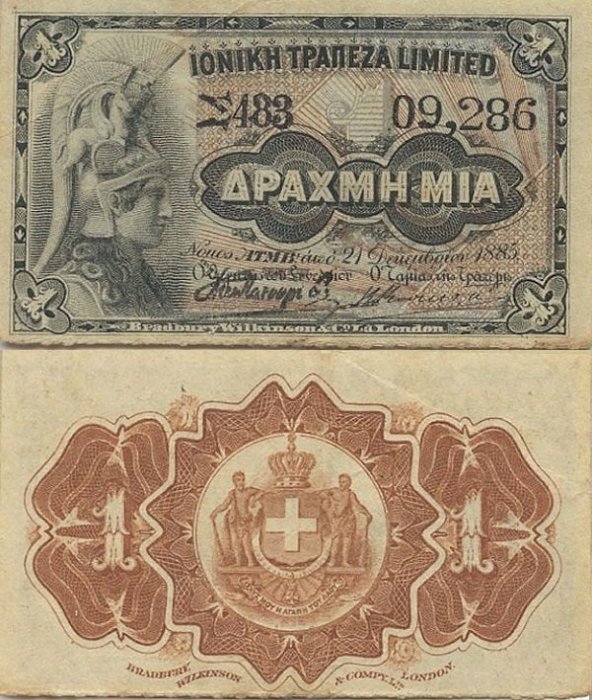
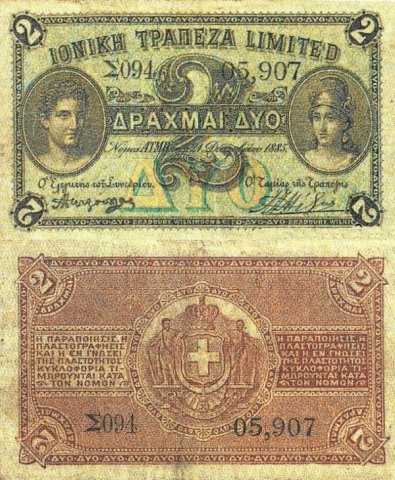
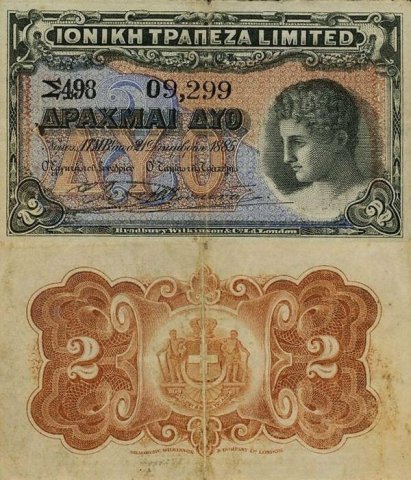
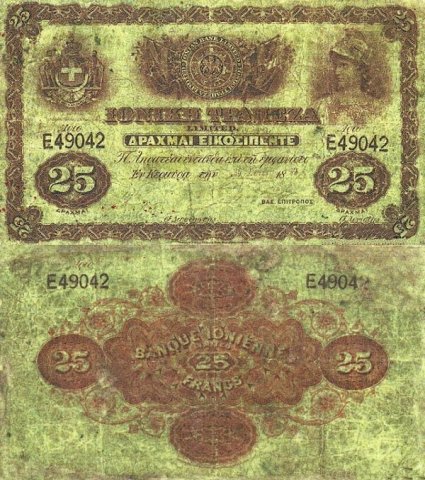



1885 – 1894 National Bank (Εθνική Τράπεζα) 10
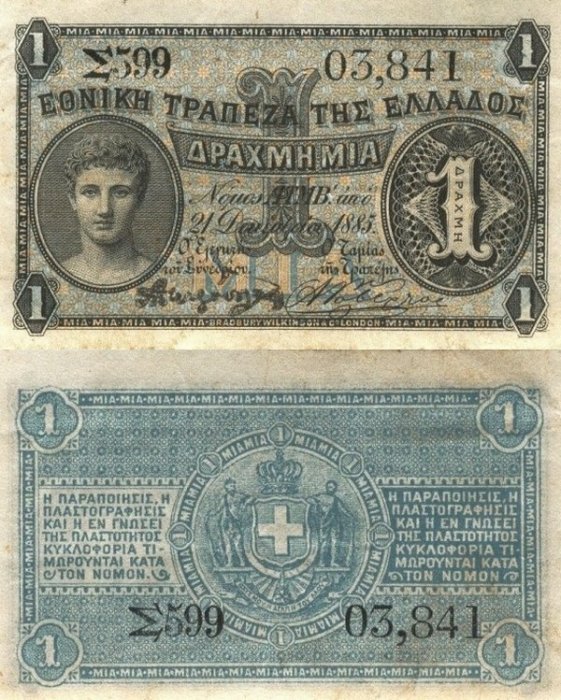
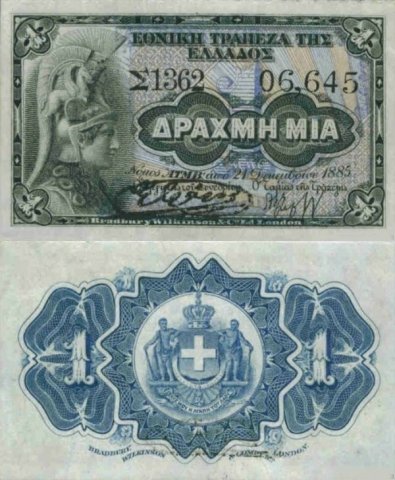

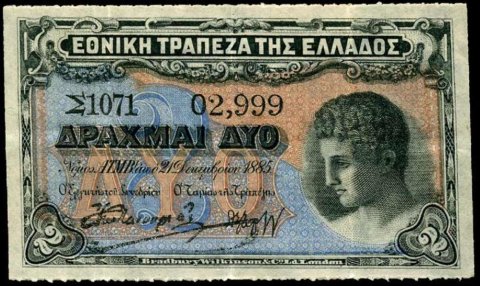
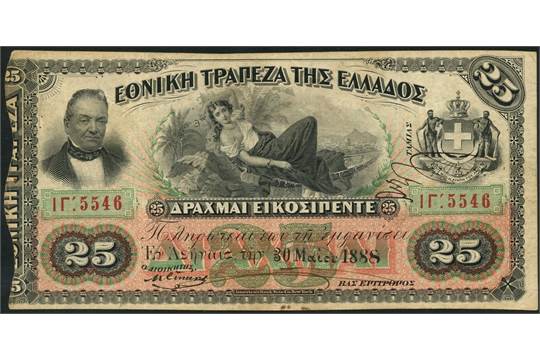


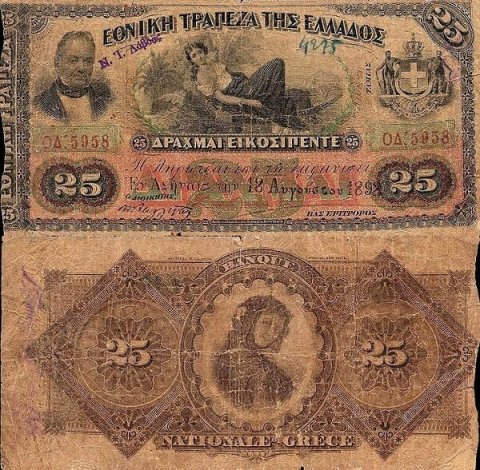
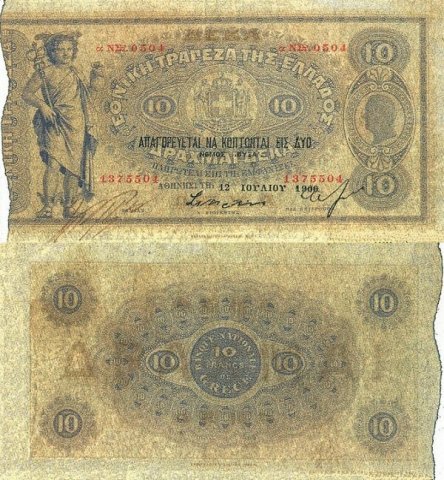

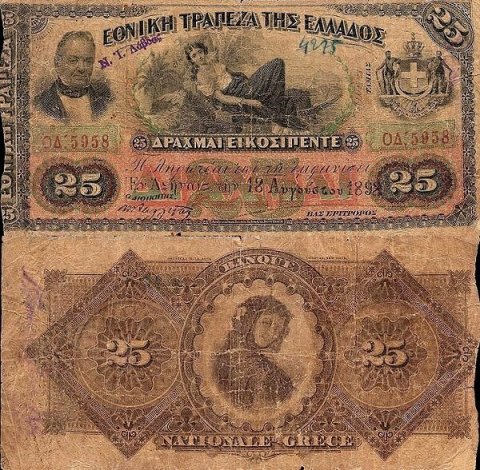
The Period 1910 to 1922 represents a turbulent time in Greek politics, the National schism between Monarchy and the Republic, the first Balkan war 1912-1913, the second Balkan war 1913, the first World War 1914-1918, The Greek-Turkish war 1919-1922.
Surprisingly, the period was handled exceptionally well in financial terms with great stability which only seems to have started running into serious trouble briefly around 1910 and then more seriously around 1921-1922 as can be seen reflected in the banknotes.
1909 – Bank of Crete ( 2)

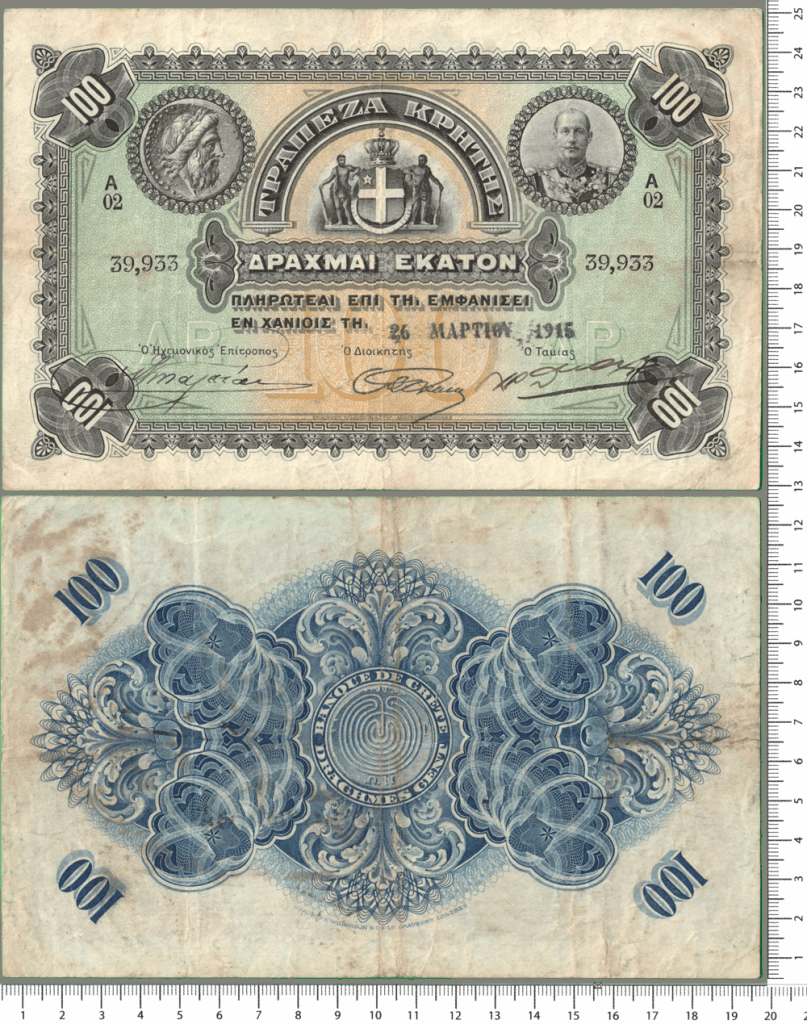
1910 – Ipirothessalia Bank (Τράπεζα Ηπειροθεσσαλίας) 2
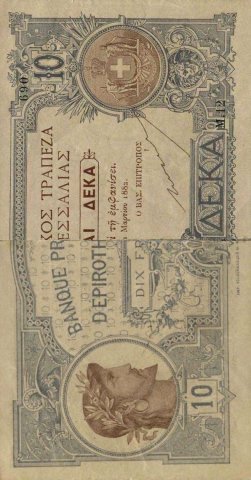
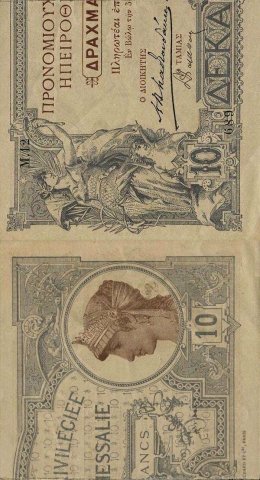
1895 – 1910 Ionian Bank (Ιονική Τράπεζα) 6

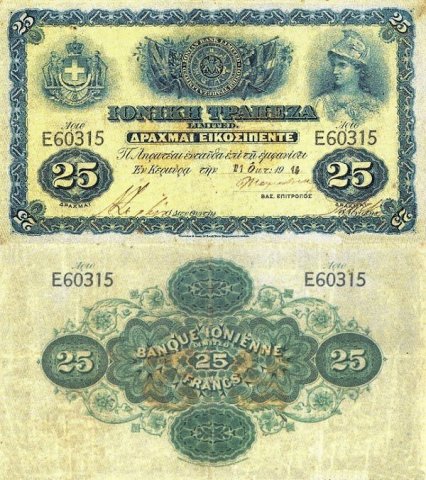
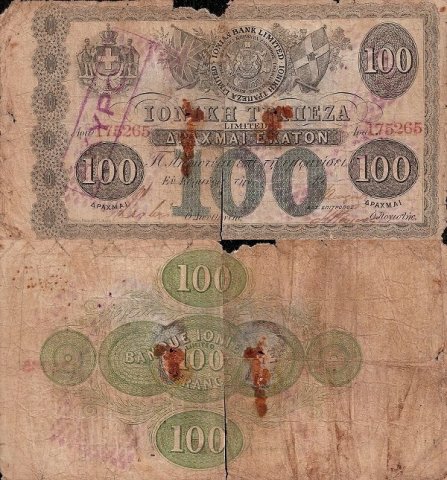
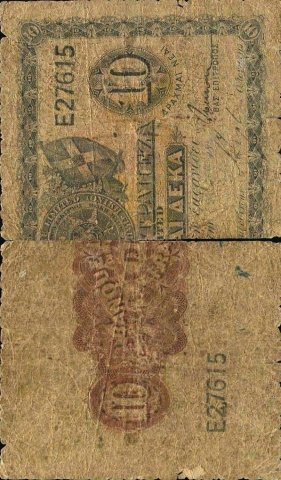
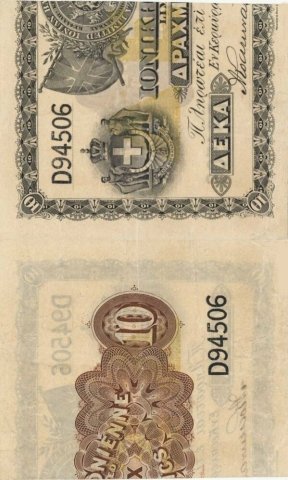
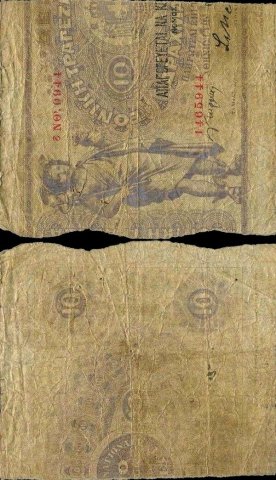
1897 – 1922 National Bank (Εθνική Τράπεζα) 66
Some banknotes are cut in half, this was due to forced loan from the public, the law of 25/3/1922 stated that every banknote had to be cut in half, the left half remained in circulation at half face value and the right half exchanged by the state for a 20 year government bond, later newly issued banknotes that did not need to be cut in half beard the stamp ‘NEON’.

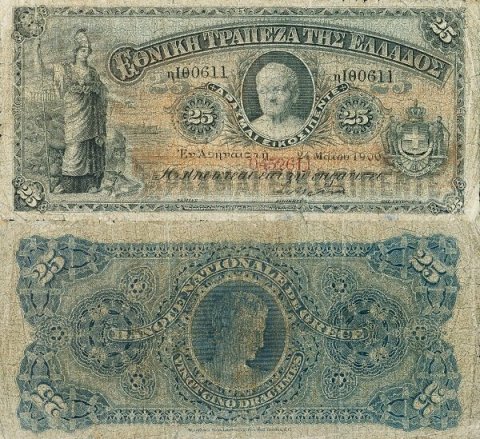
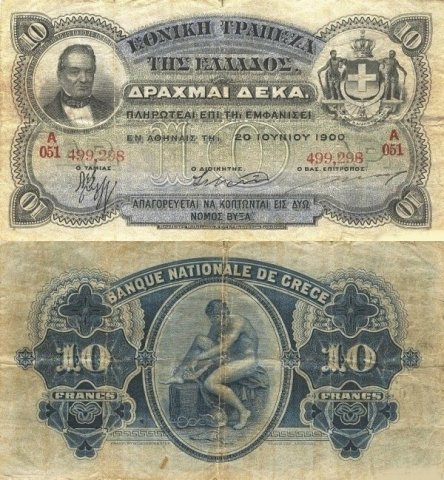

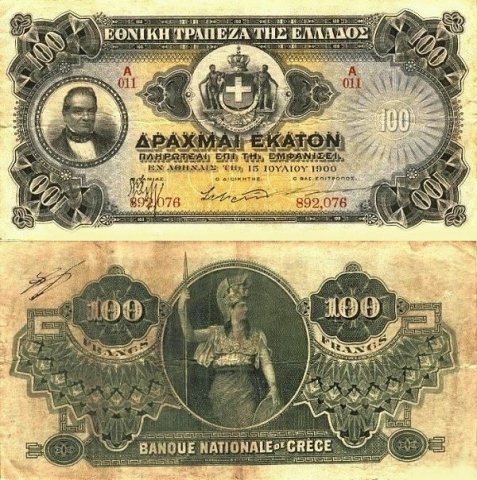
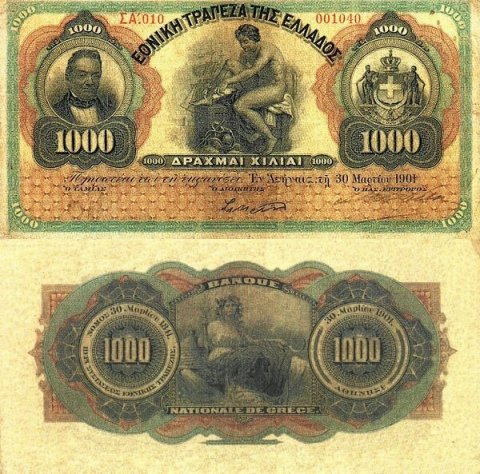
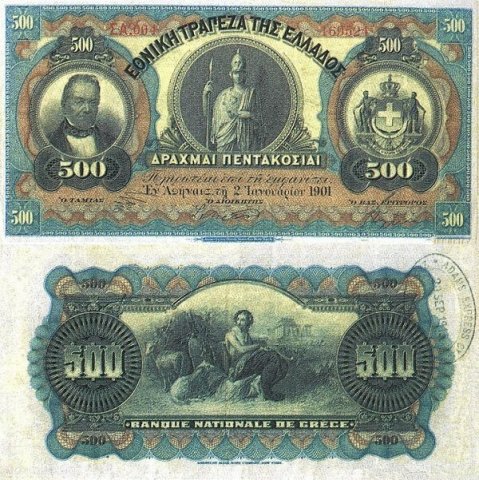
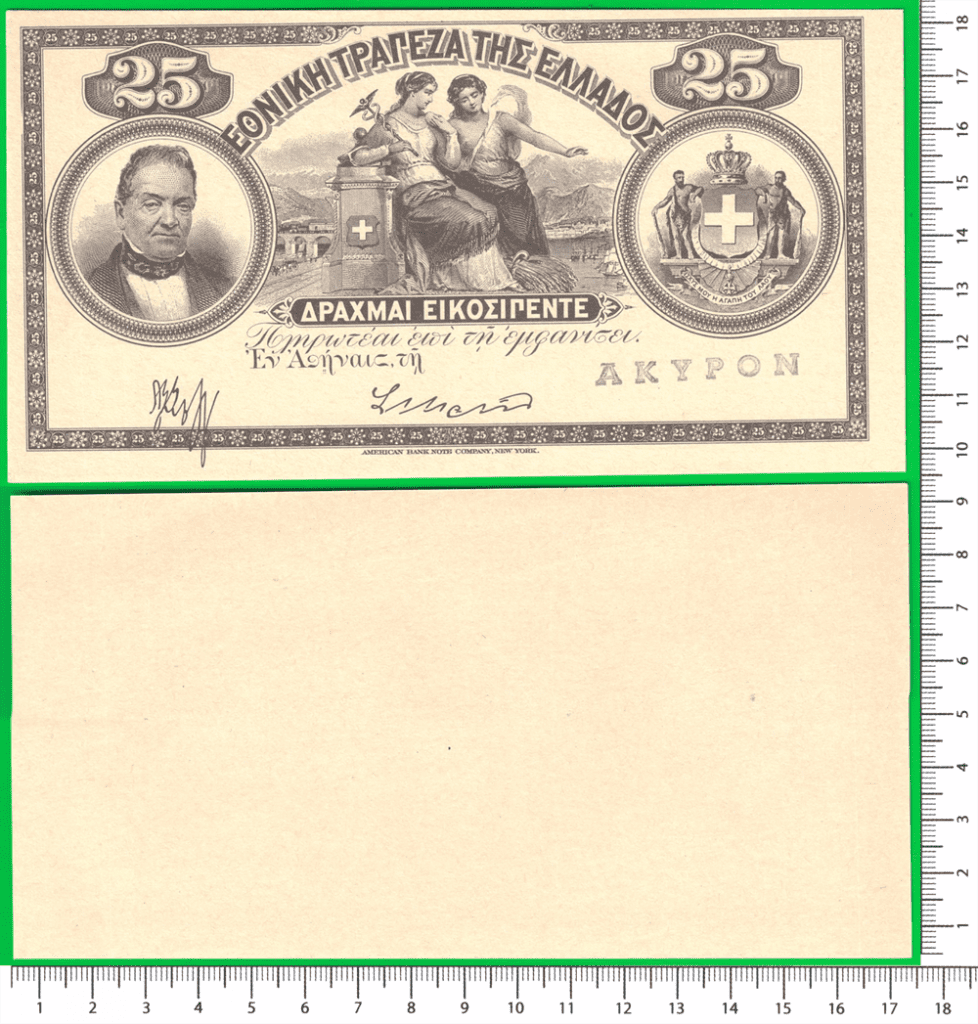
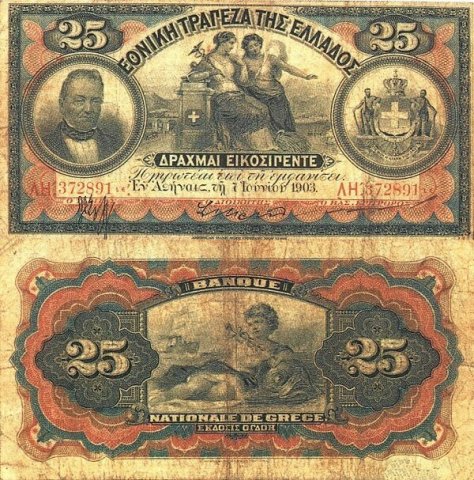
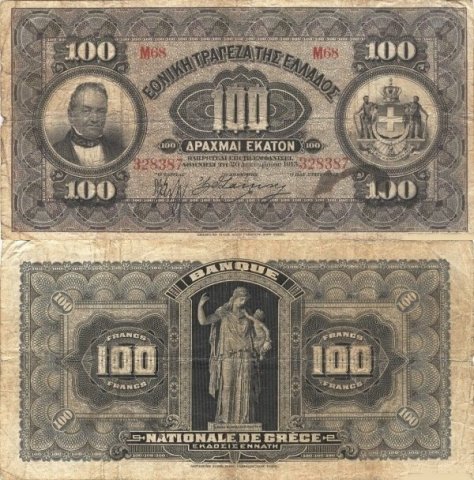
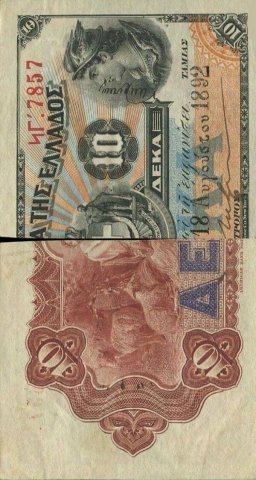
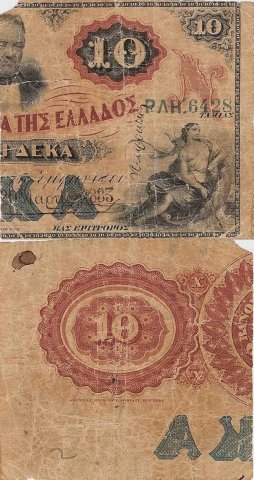
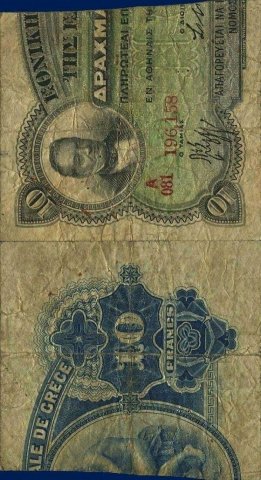
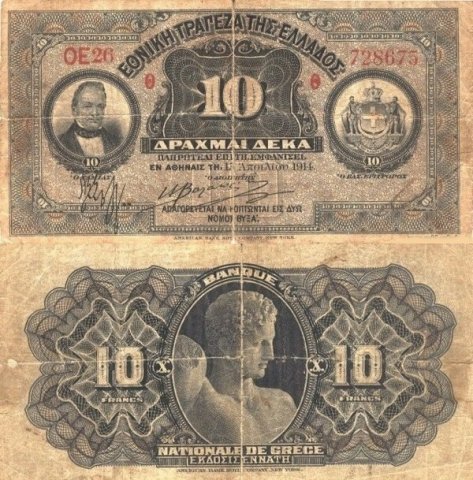
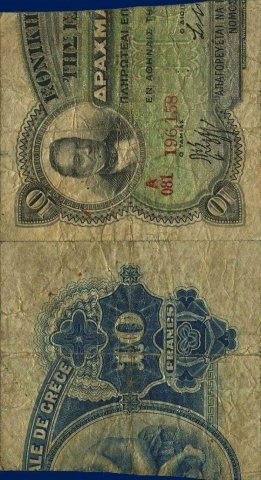


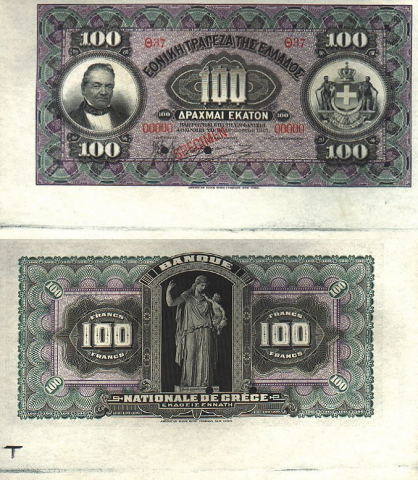
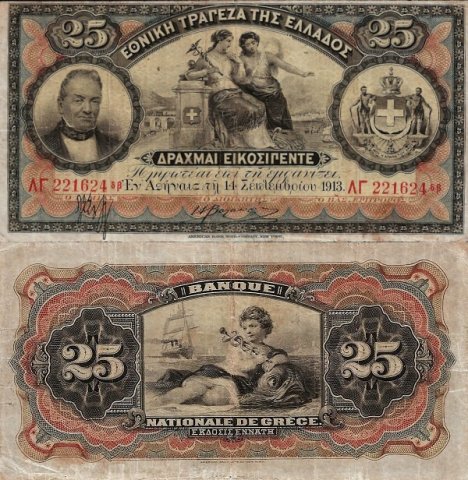

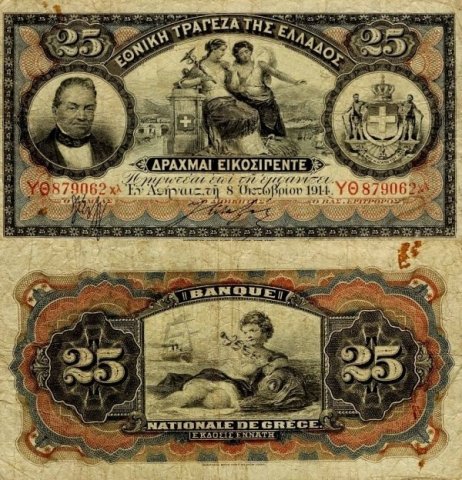
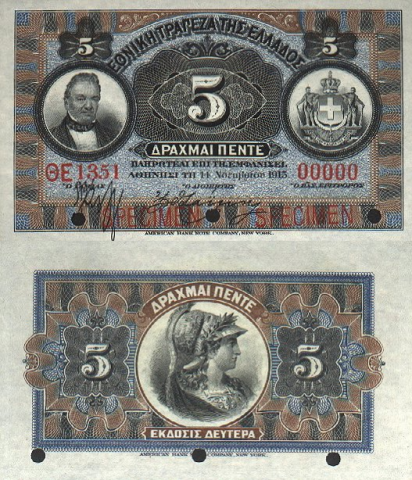
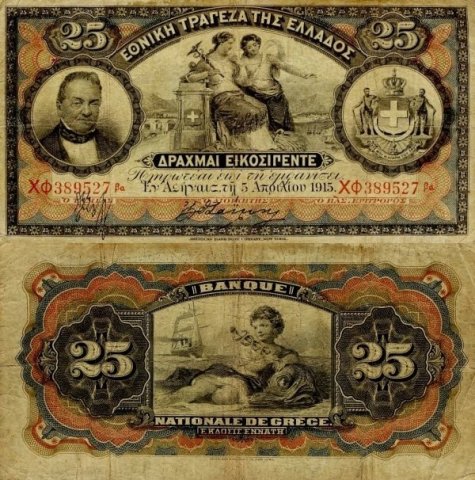

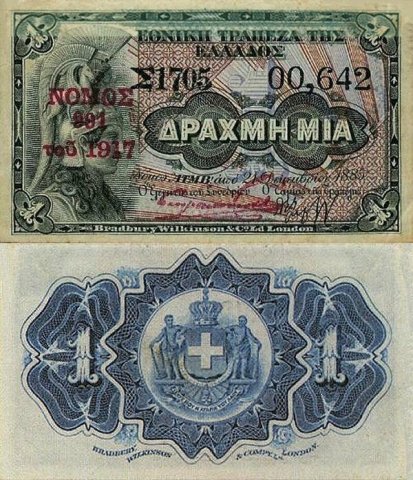
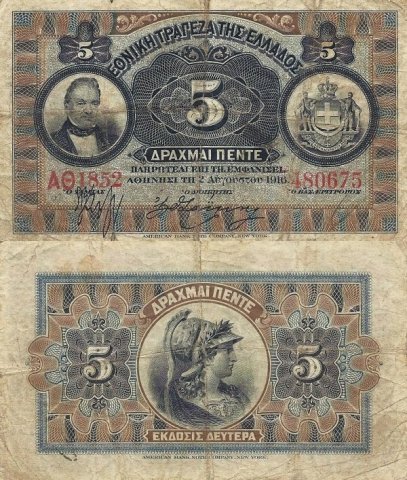



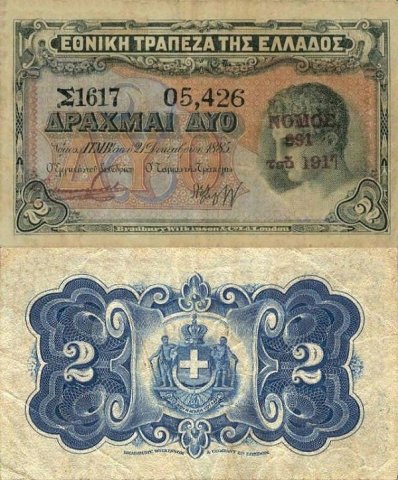
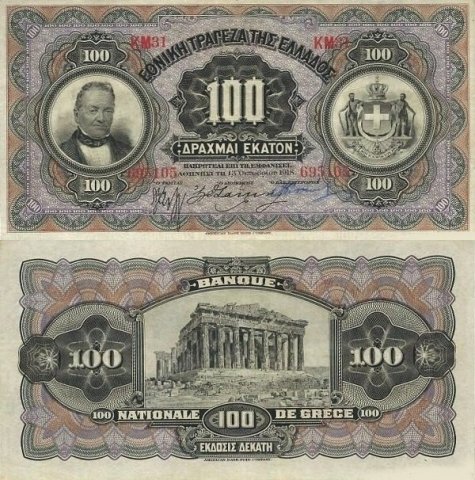
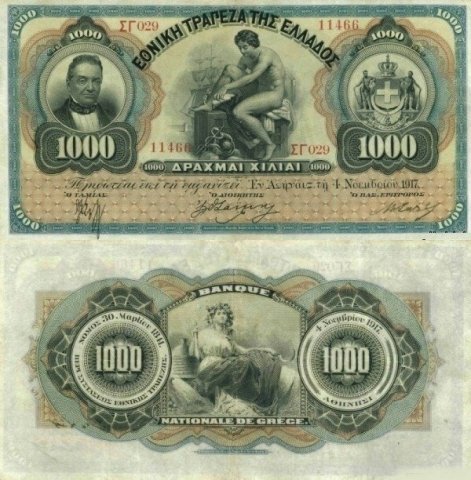

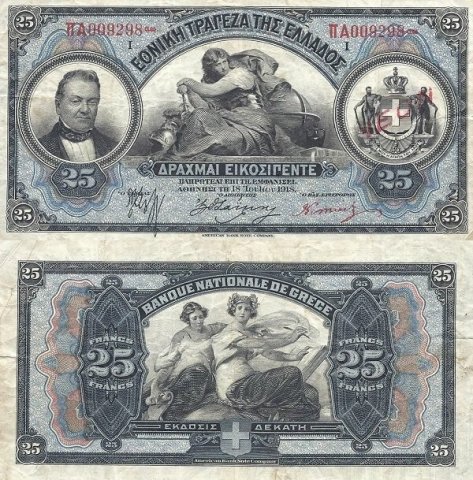
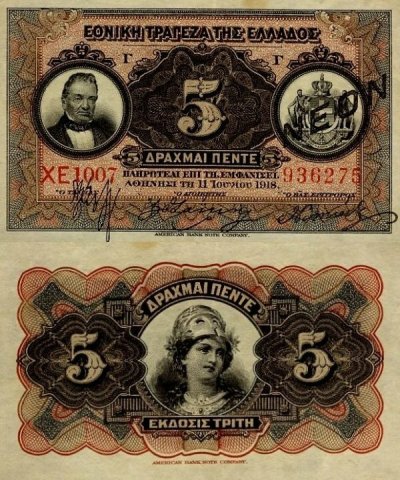
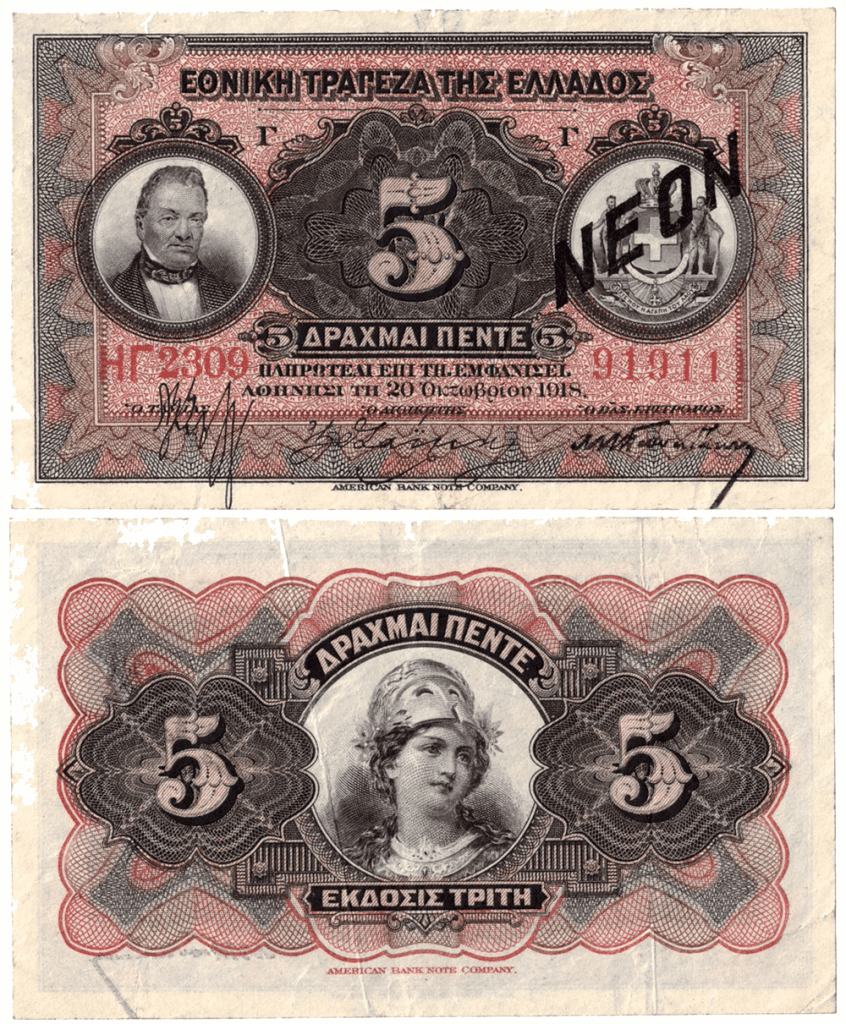

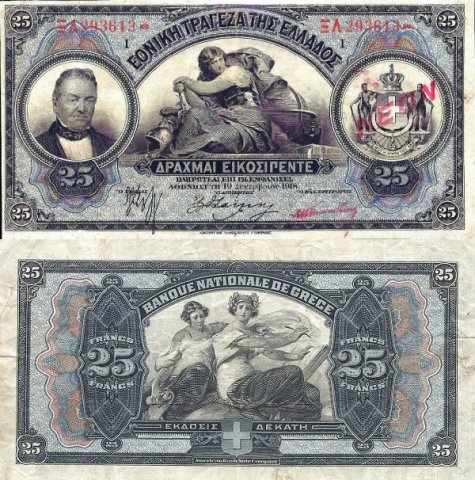
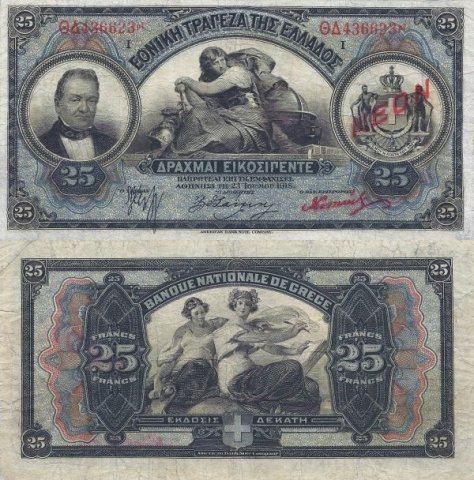
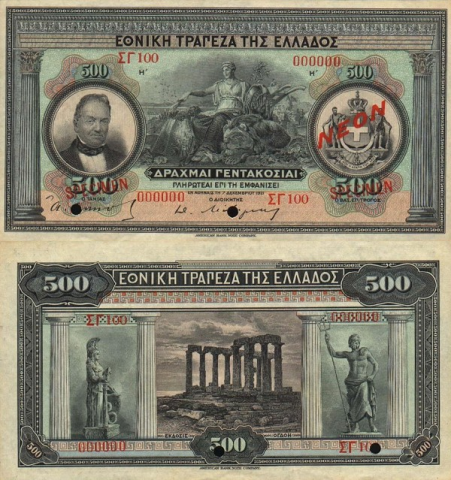
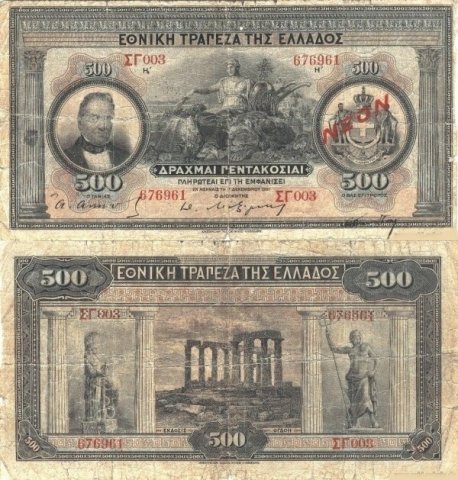


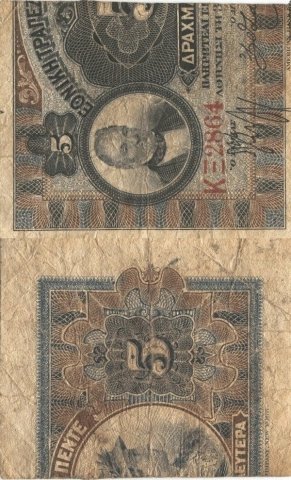

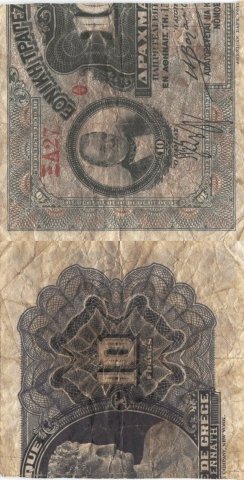


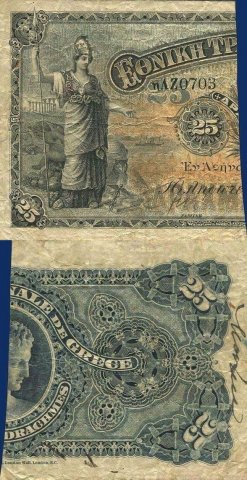


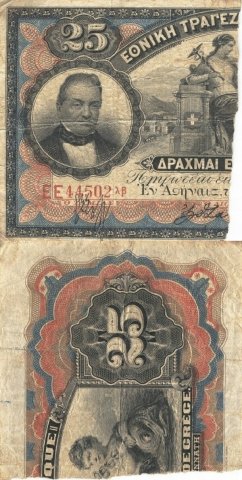
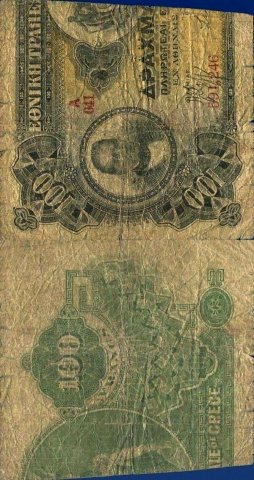
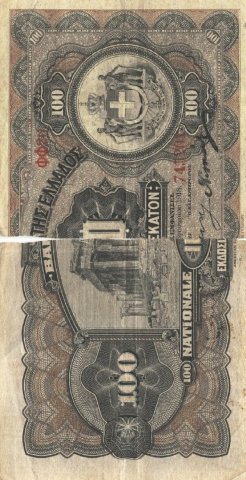


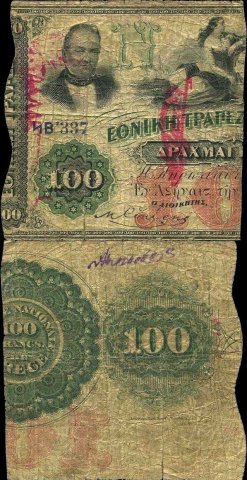



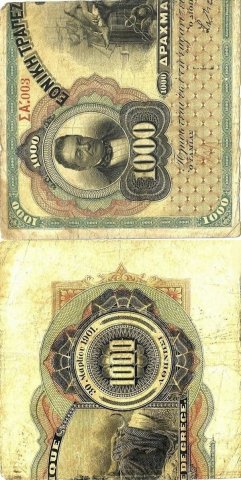


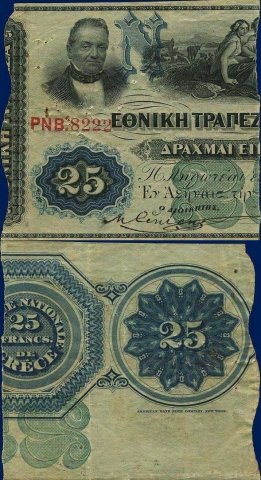
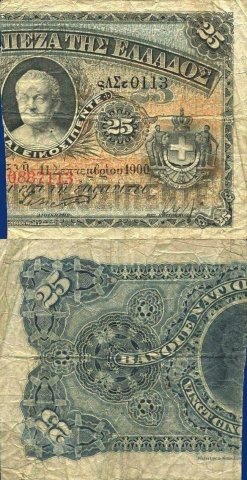
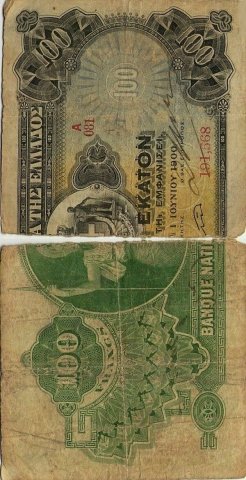



1910 – 1922 Greek State (not organised as a bank) 14
Due to inability to mint coins the Greek state issued banknotes instead until the end of the Greek-Turkish war
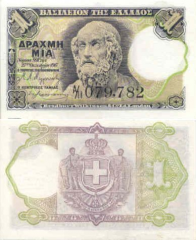
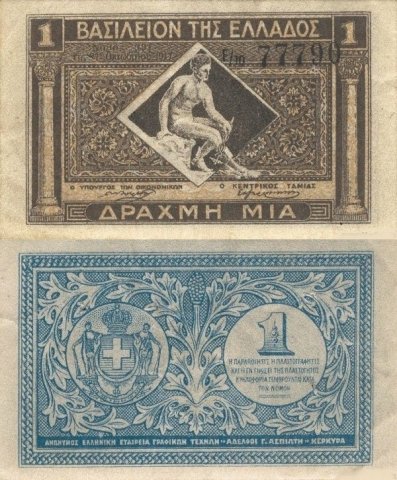
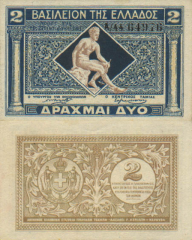
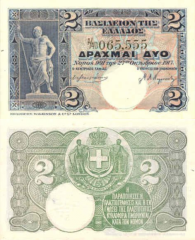


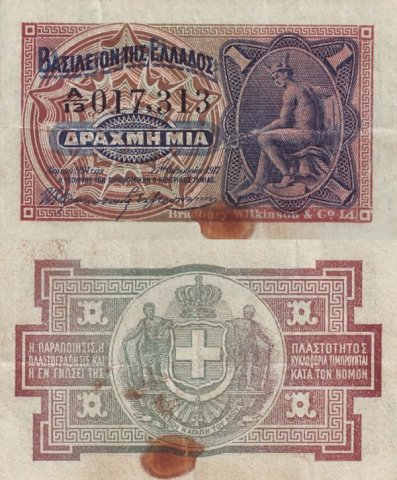


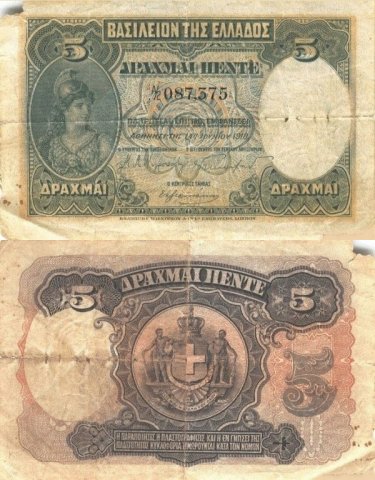

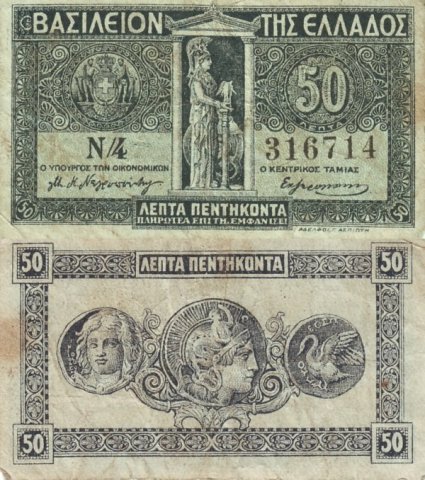

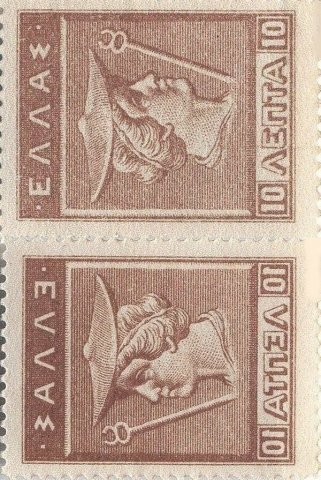

1923 – 1926 National Bank (Εθνική Τράπεζα) 37
This period starts with the end of wars and takes us to the establishment of the Bank of Greece separate from the National Bank which up to then fulfilled the role of central bank of Greece despite being a mostly private bank.
Banknotes, Inflation and Economic Growth
Inflation in those days was dealt with the issuance of new banknotes, that is the reason for issuing the same denomination with different designs that would otherwise be confusing, if this is not possible or deemed not very successful then they stamp the word NEW (‘NEON’) on the banknote. Reprinting of the same design usually indicates increasing money supply due to economic growth rather than inflation … apart from enjoying the banknotes you can also learn here 🙂 Shalom.
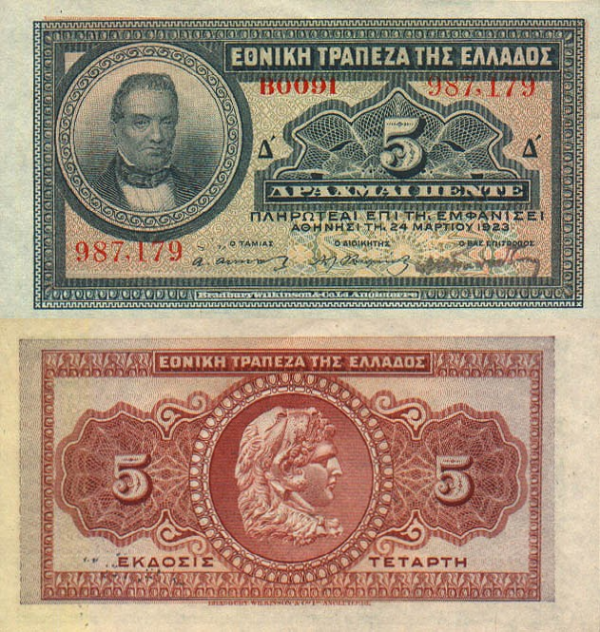

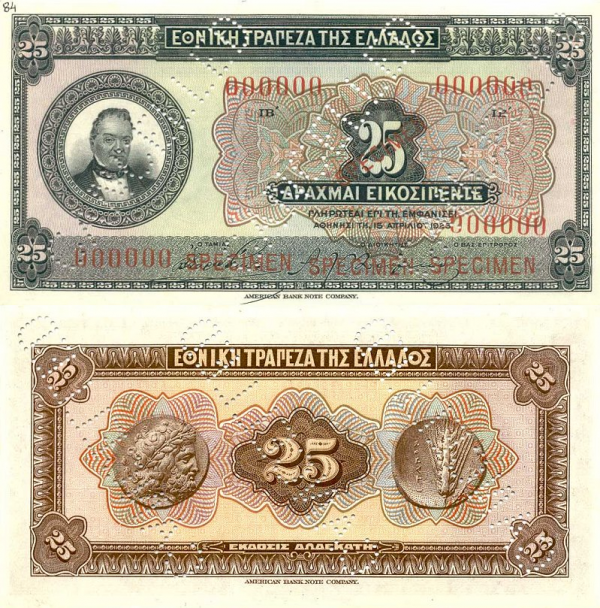

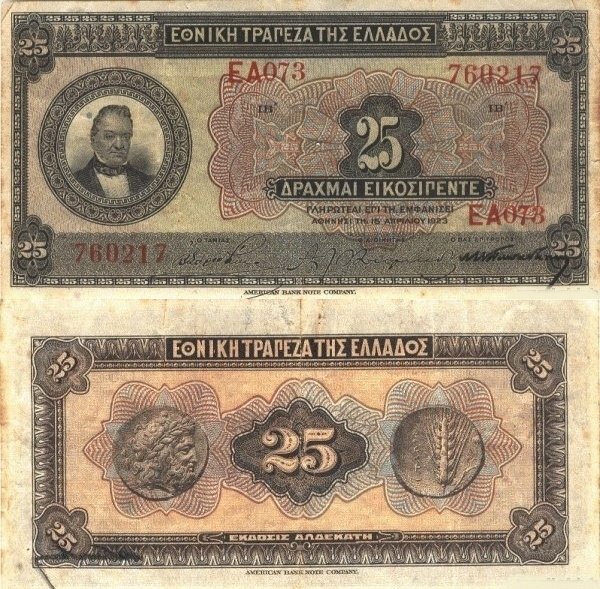
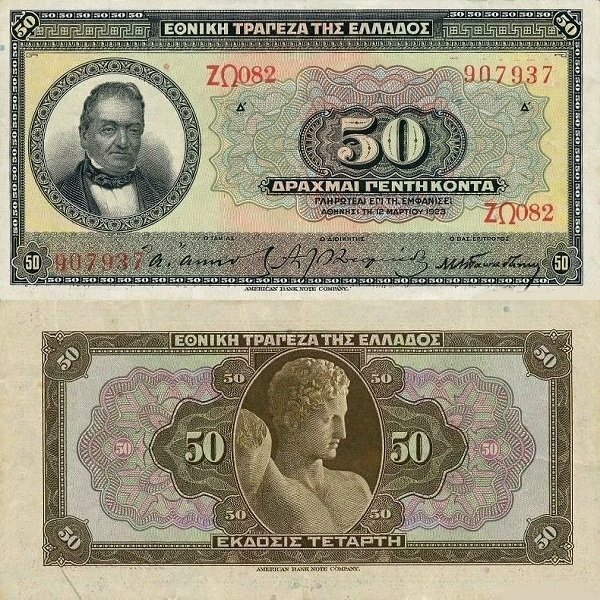
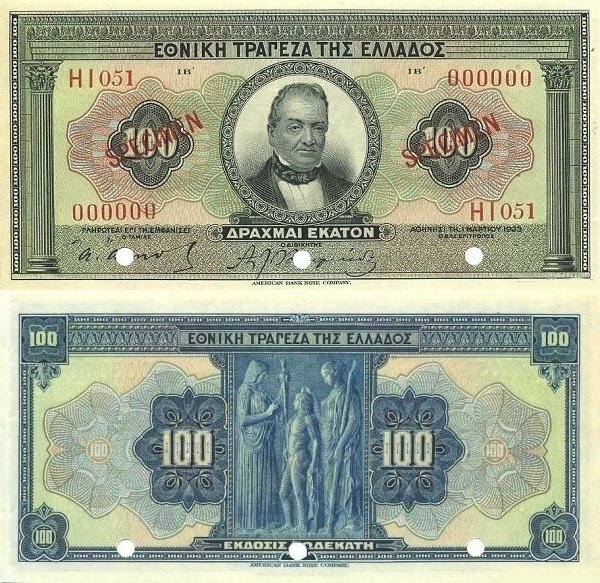

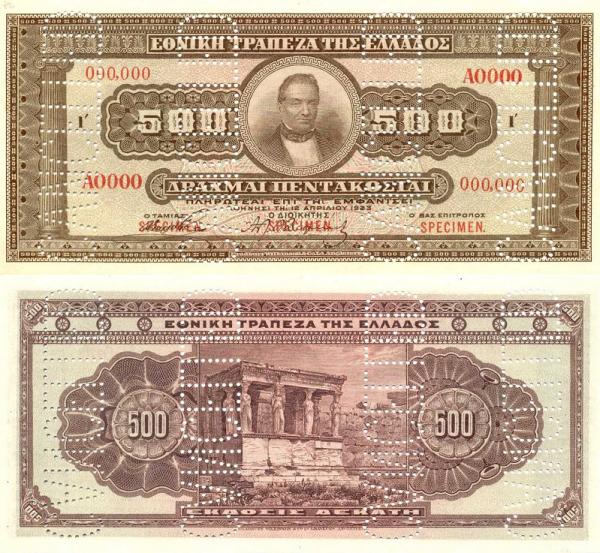

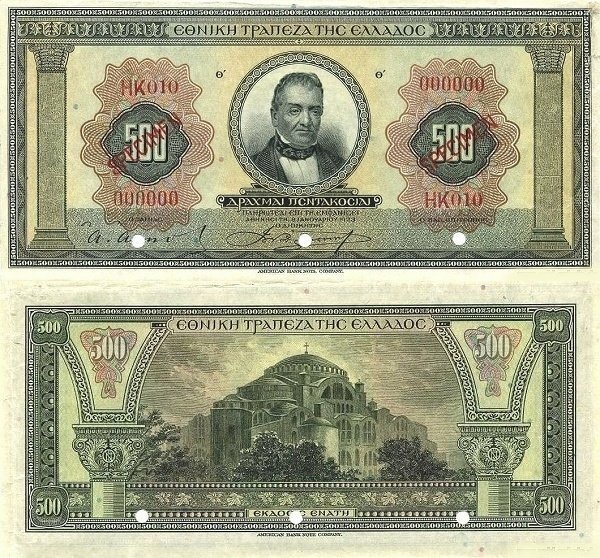

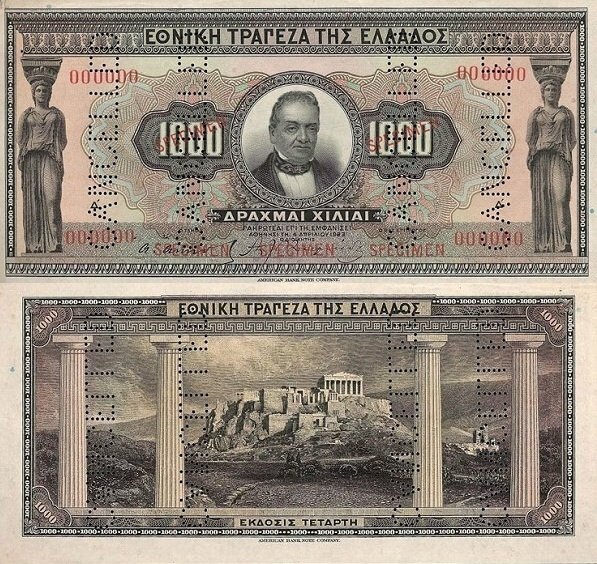


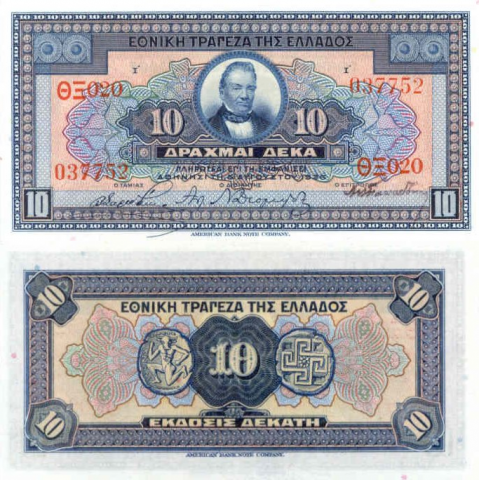
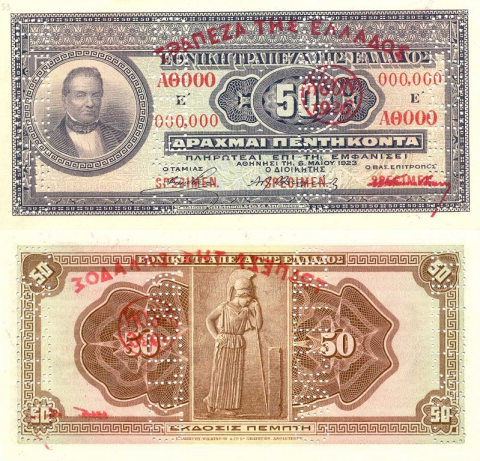




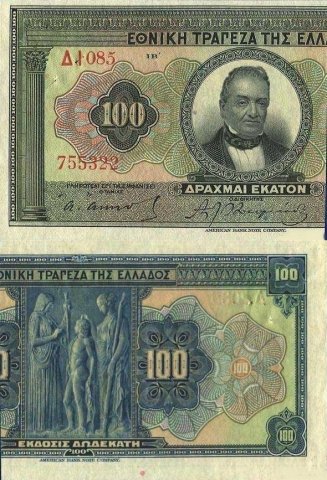
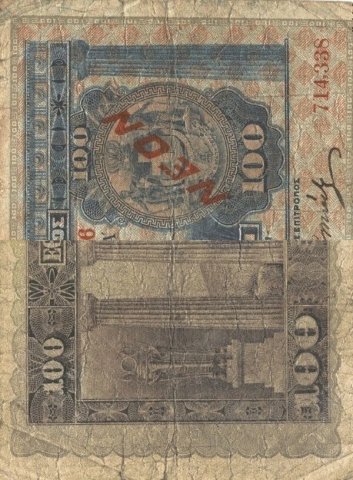

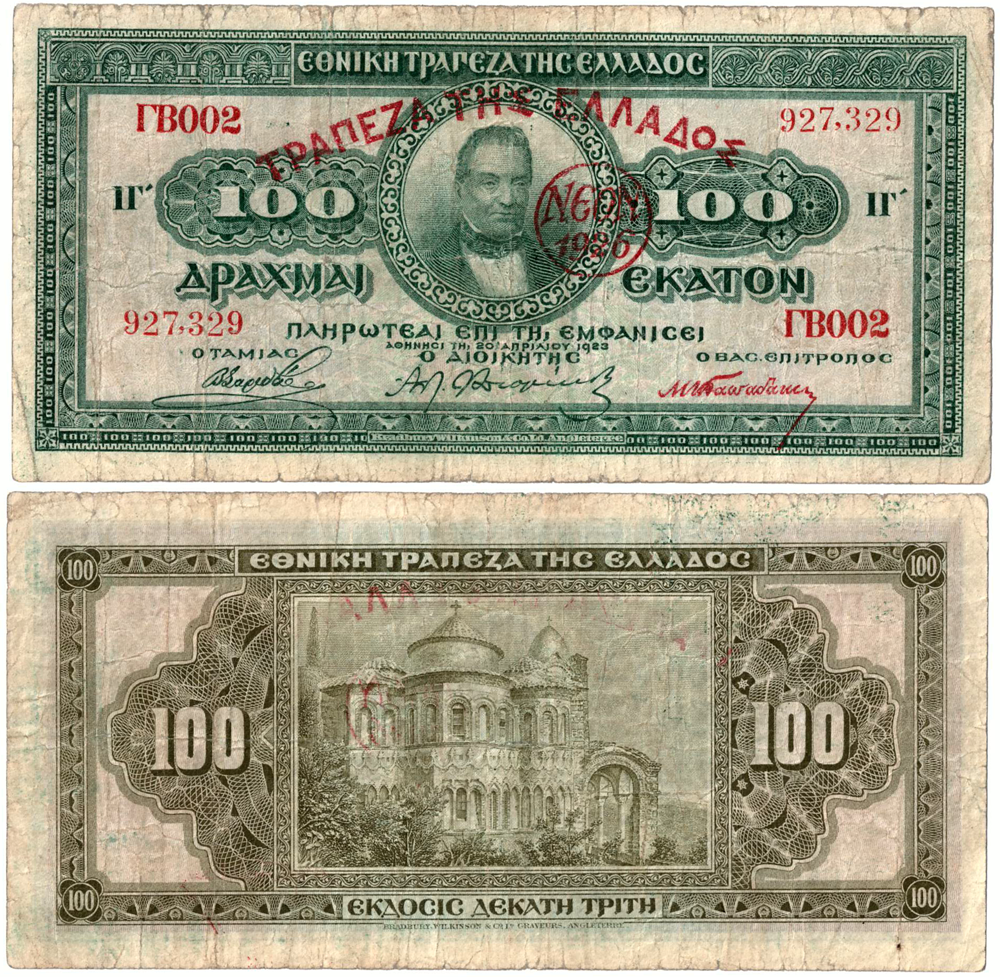
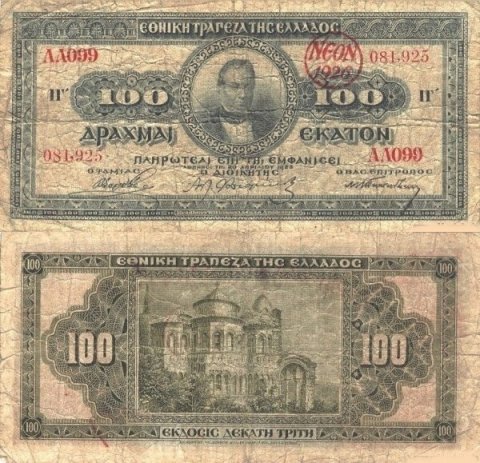
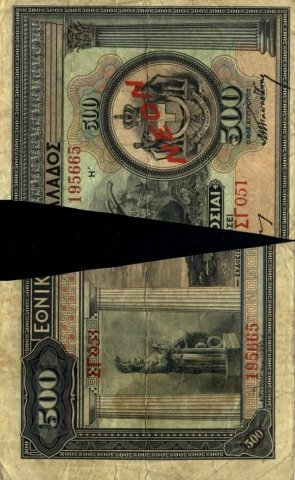


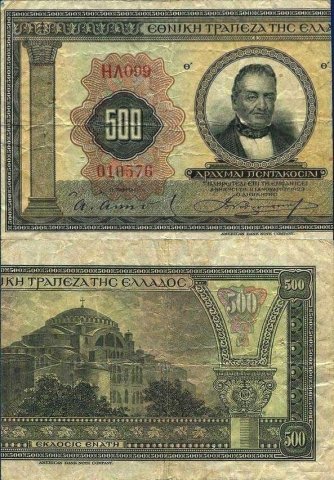
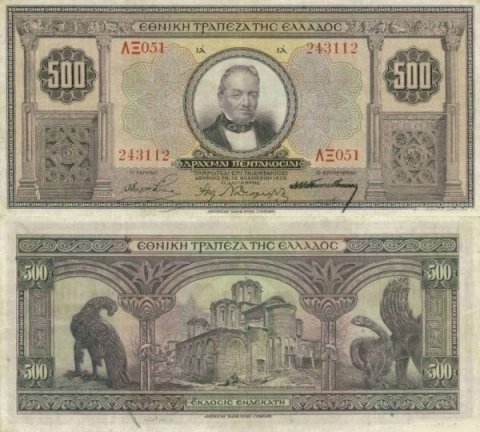
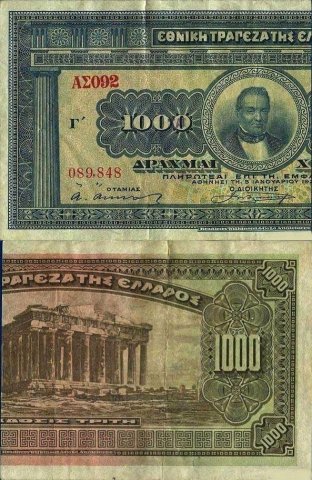
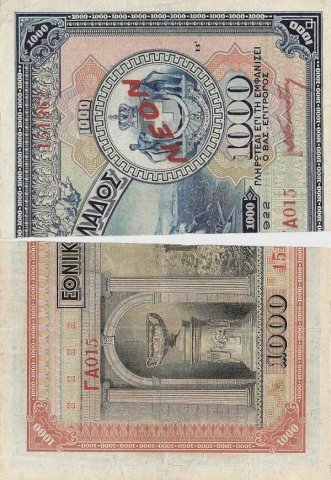
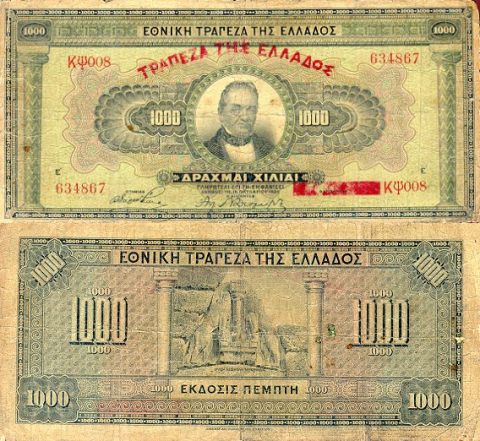
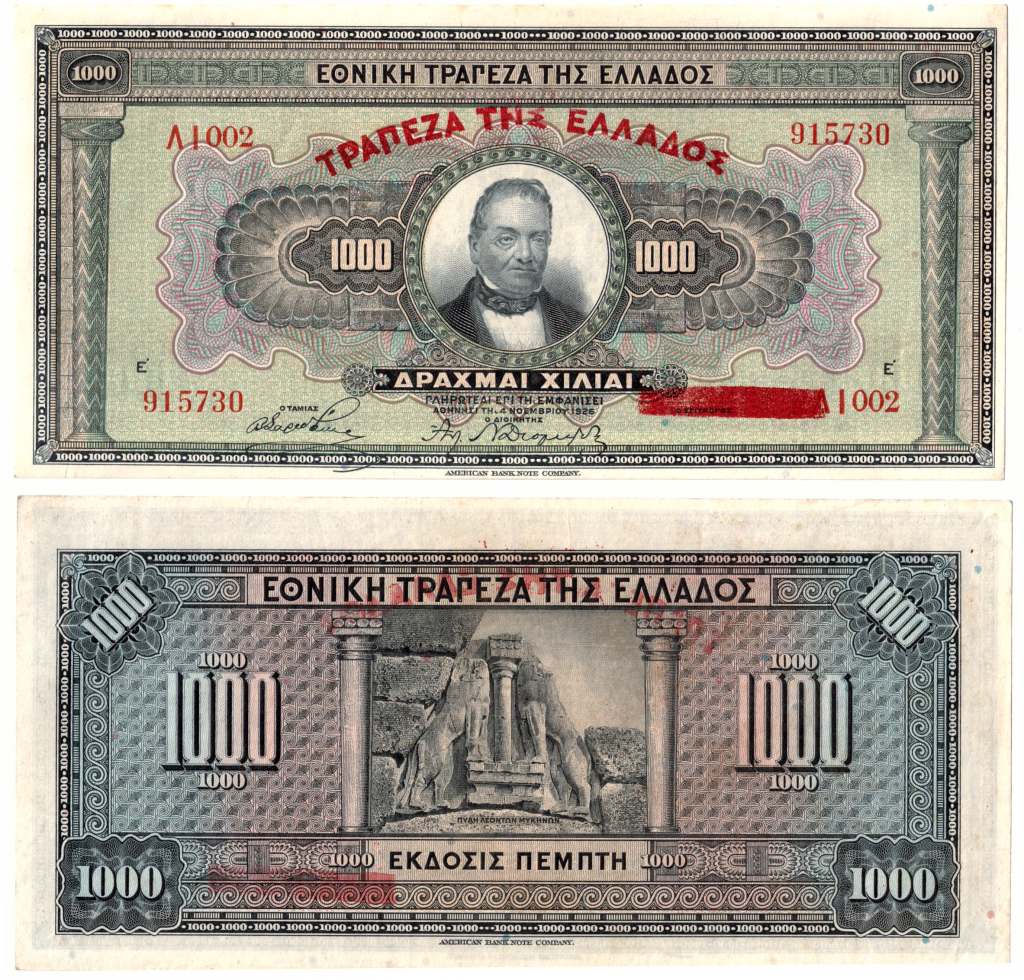
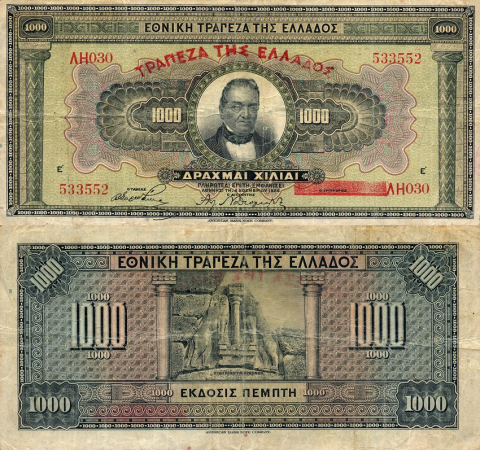



1927 – 1940 Bank Of Greece (The Central Bank of Greece) 34
In 1927 the Bank Of Greece was set up as the nations central bank with sole authority to issue legal tender, initially Banknotes of the National Bank Of Greece stamped in red with BANK OF GREECE were issued until the new banknotes were ready.
Notice how the new banknote design 1932 onwards is more nationalistic and folksy and less professional, hint: the ‘democratisation’ of wealth had to make the banknotes appealing to common folk not just to elites.
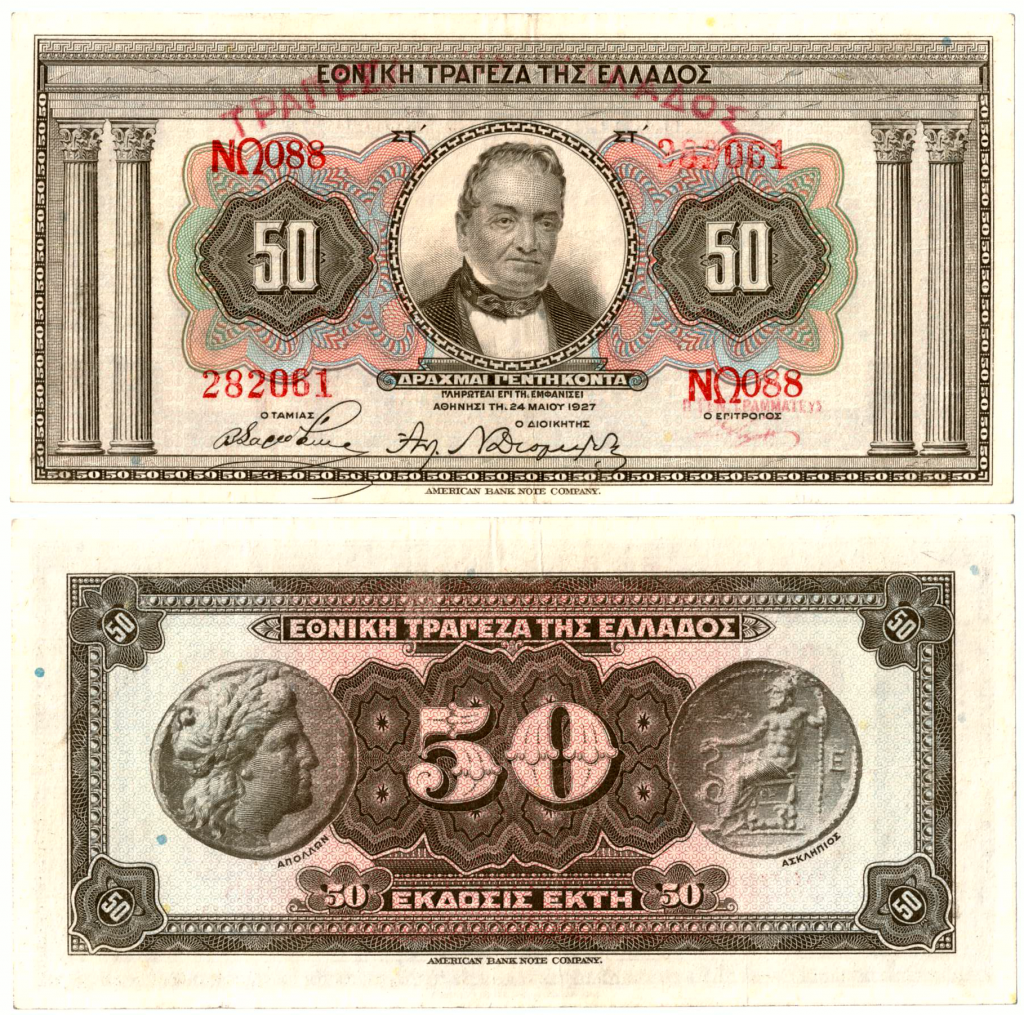
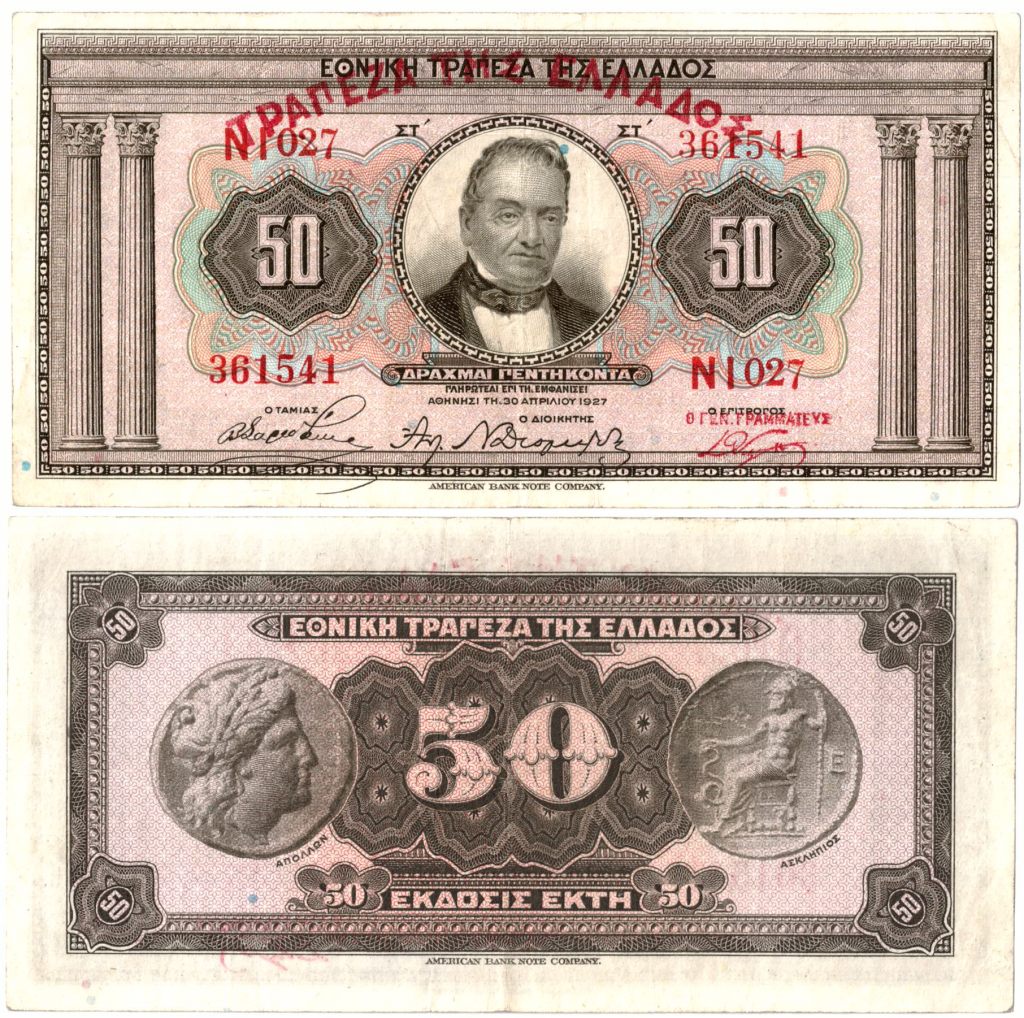
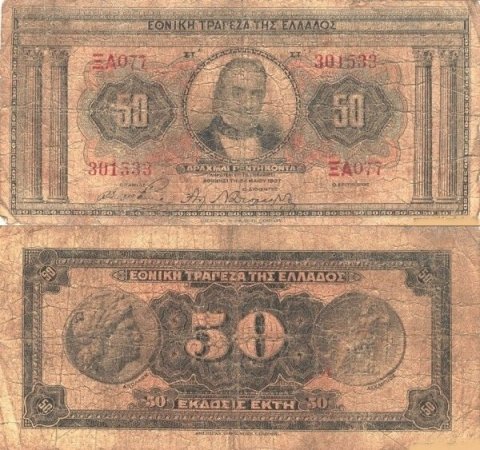
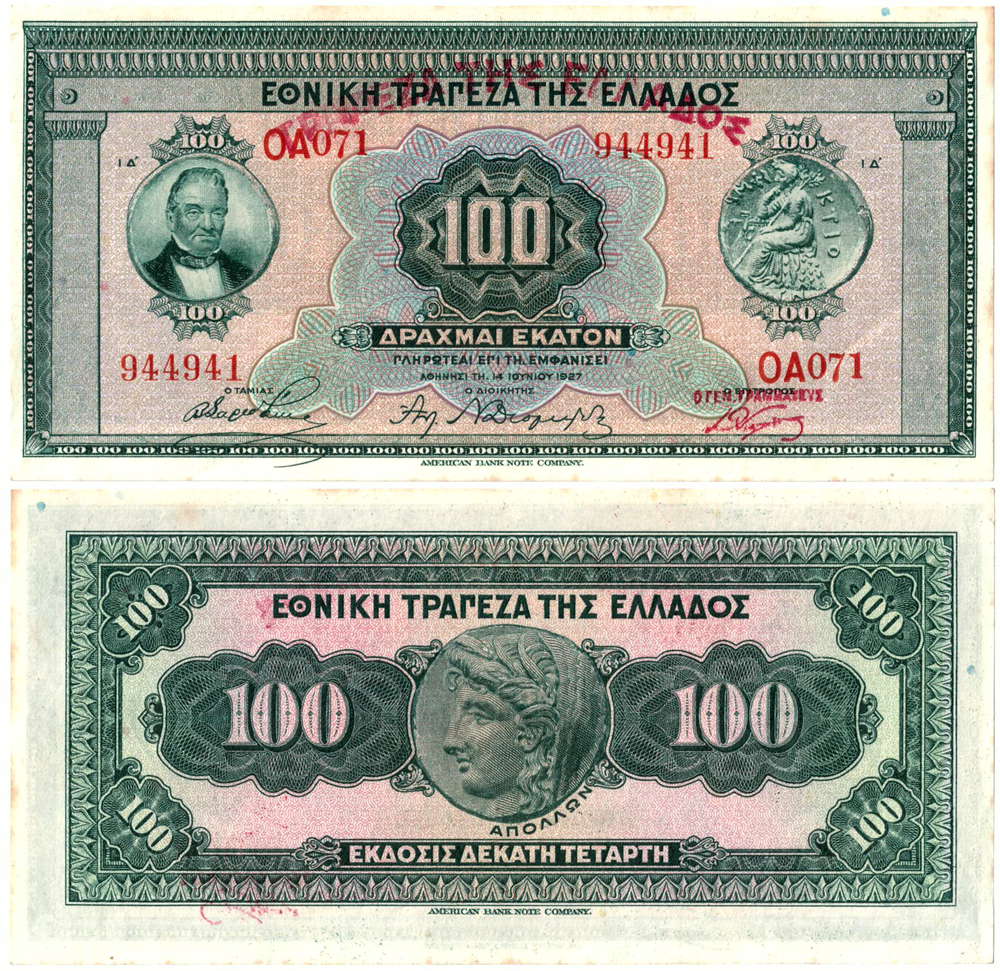
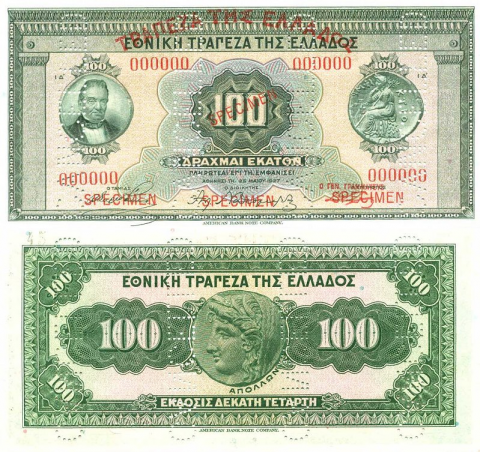
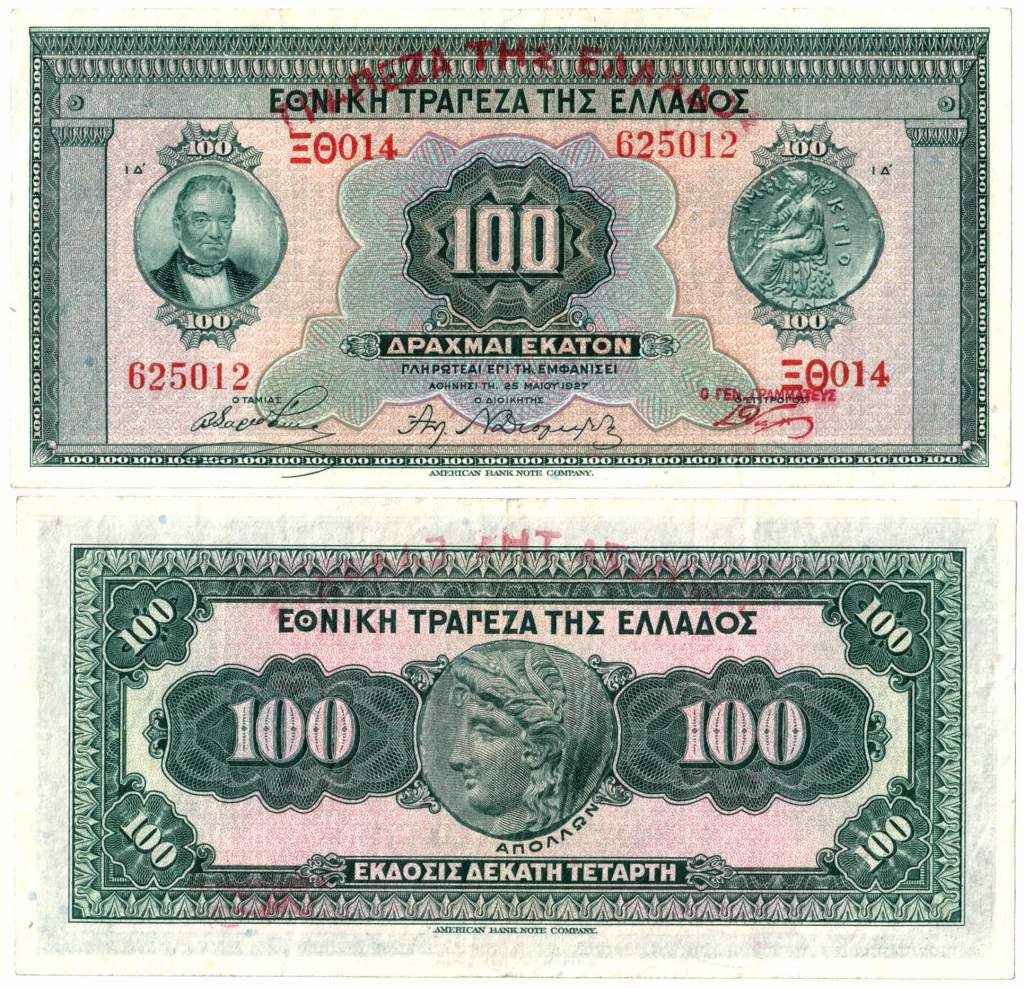
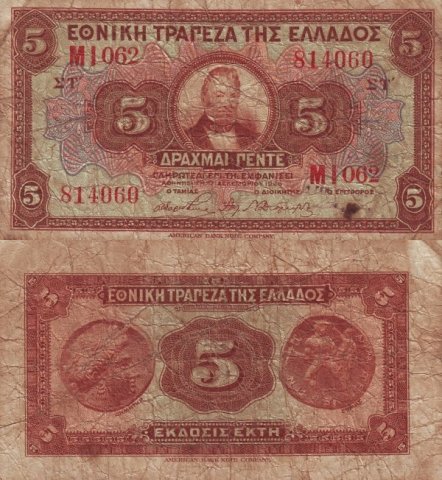

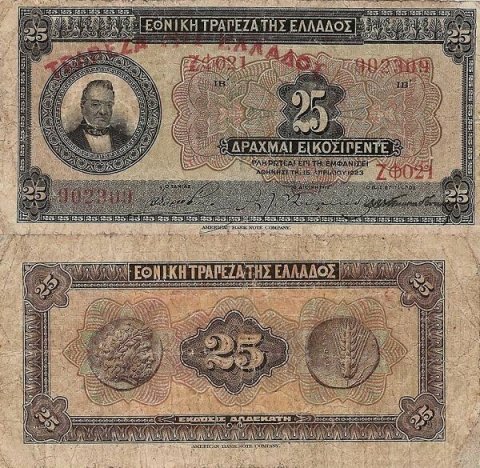
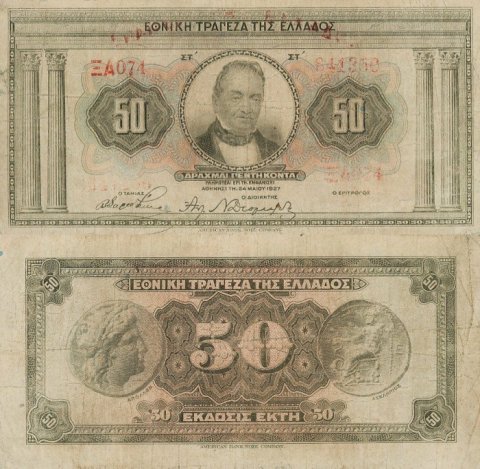
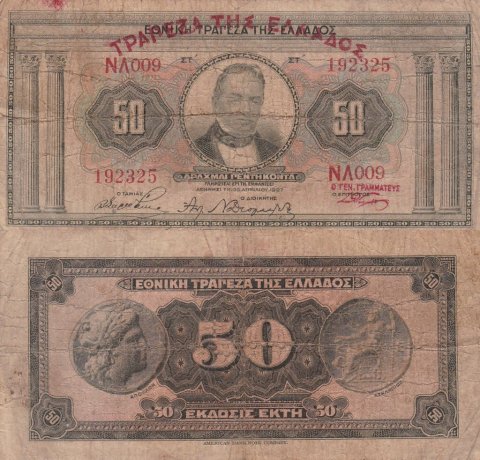


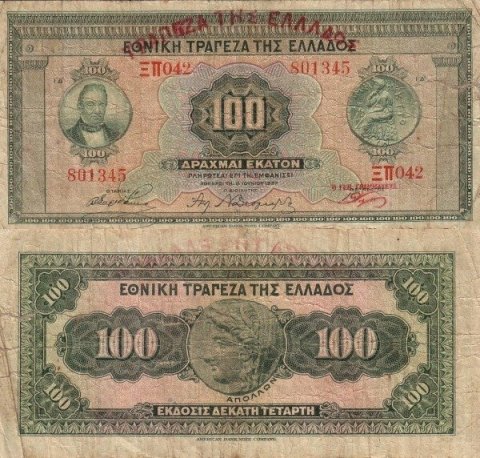

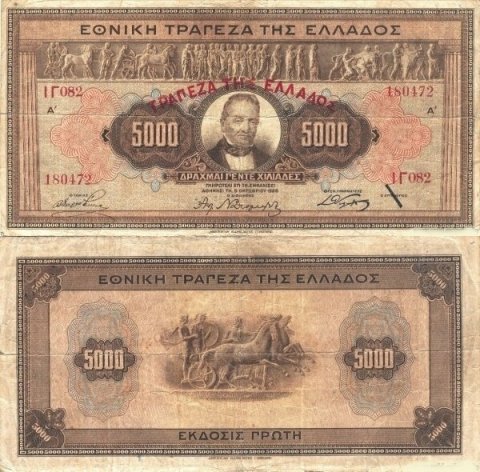
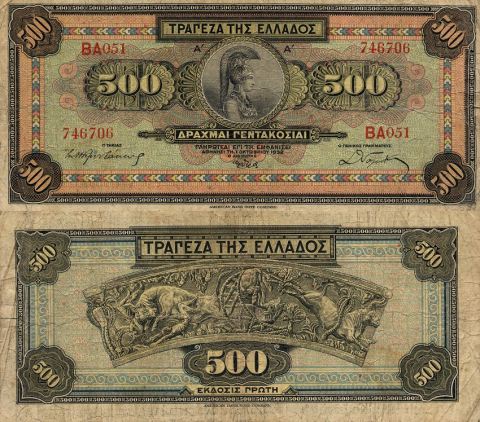
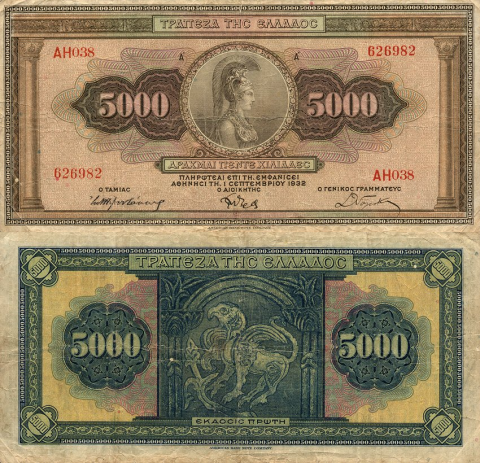
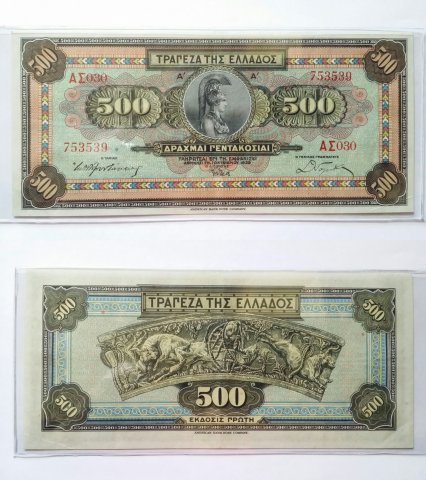
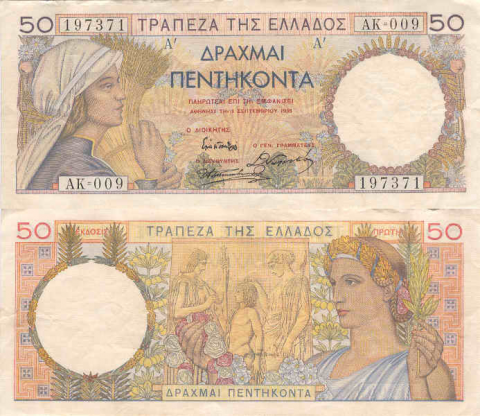
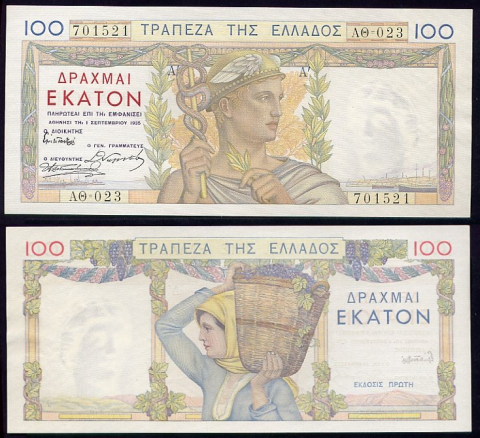
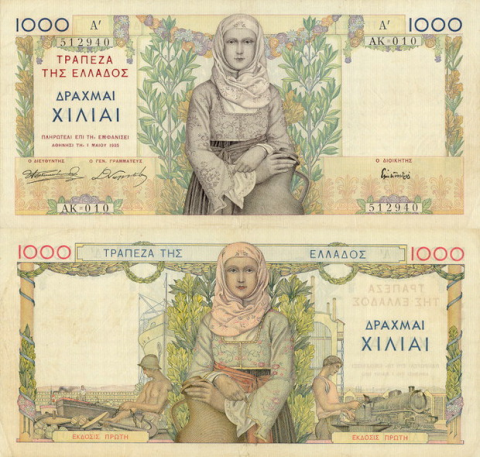
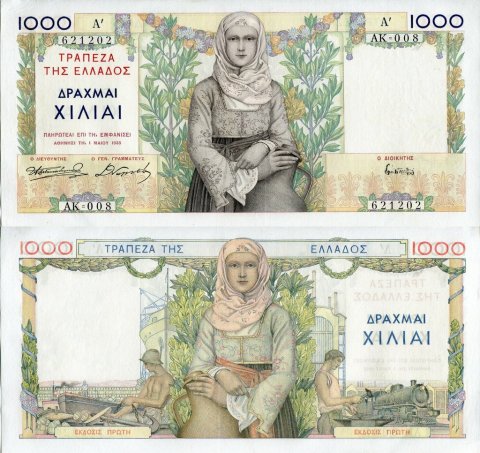




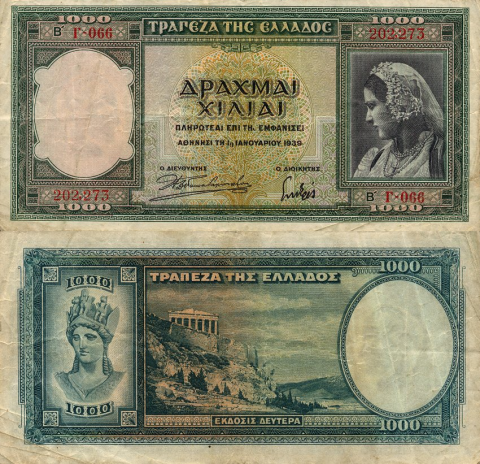
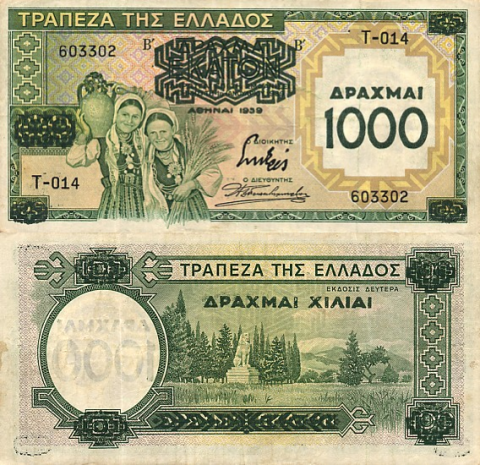



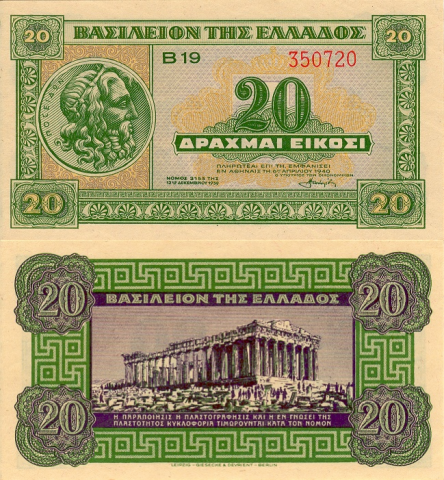
1941 – 1944 Cassa Meditarranea (Italian State) 9
These Banknotes were issued by the Italian occupation forces in WW2 , notice the reference to antiquity as the bond between Italians and Greeks, but also who can dispute the elegance of the depictions.
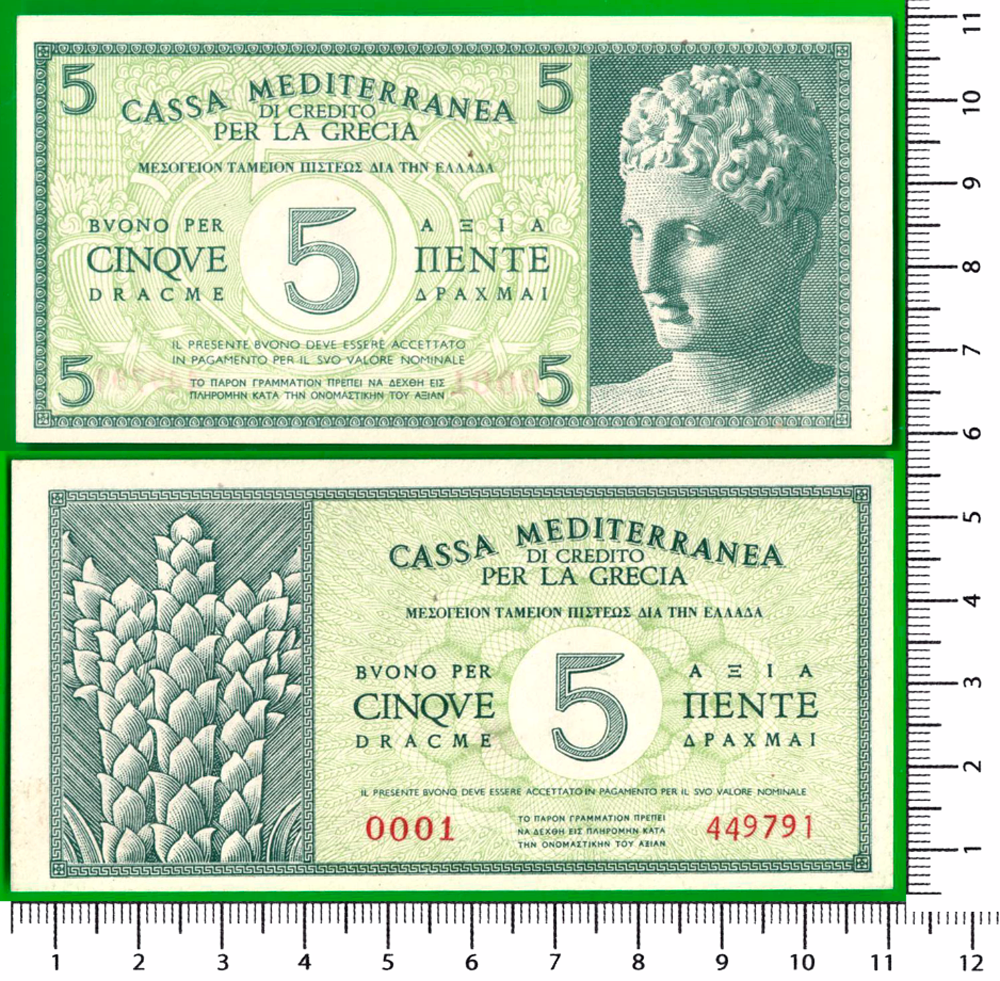
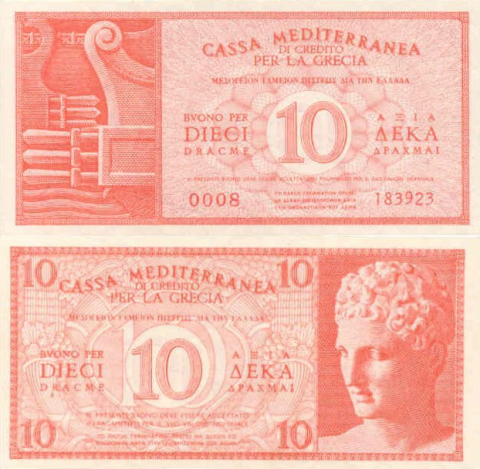

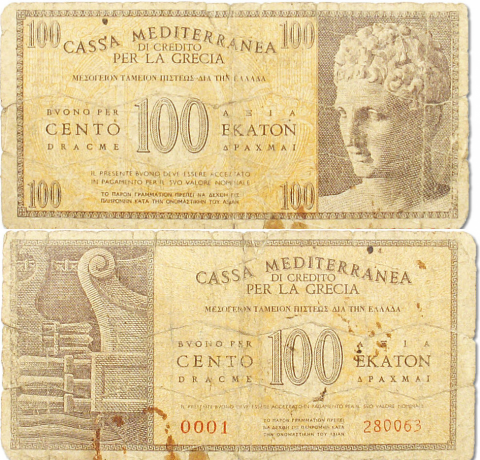
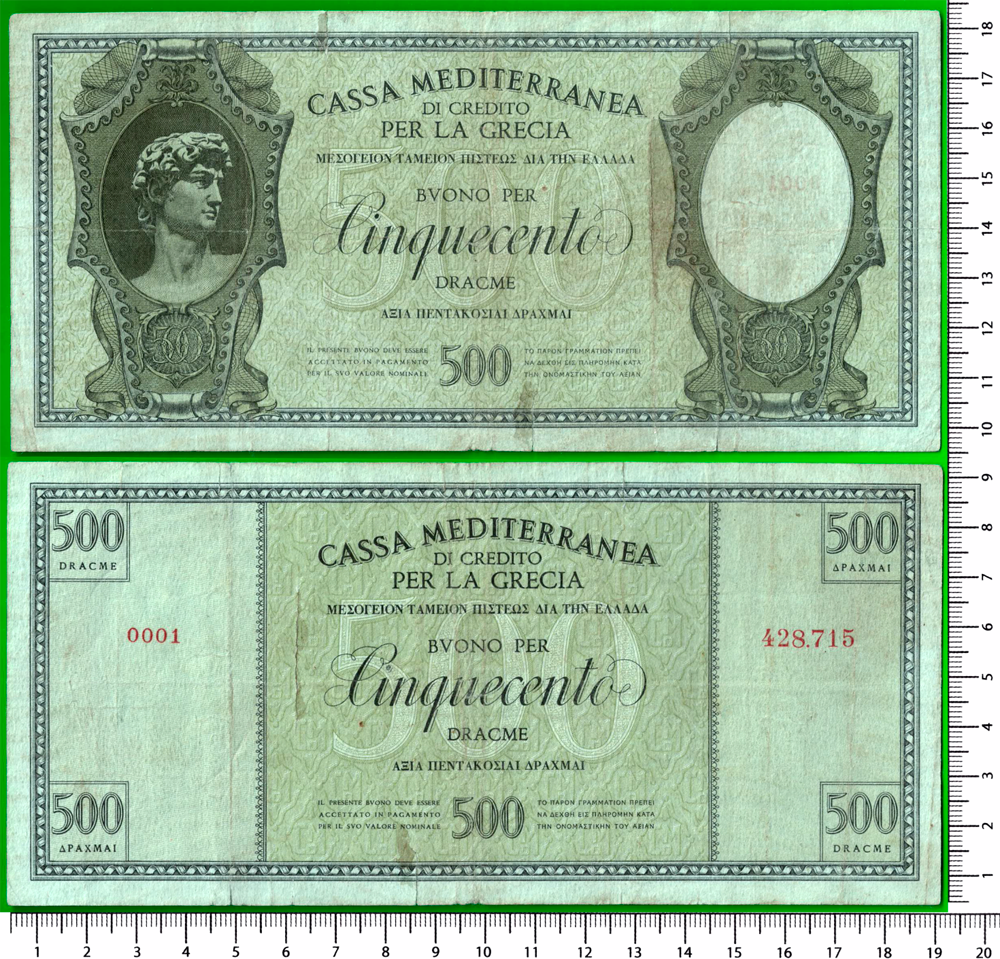
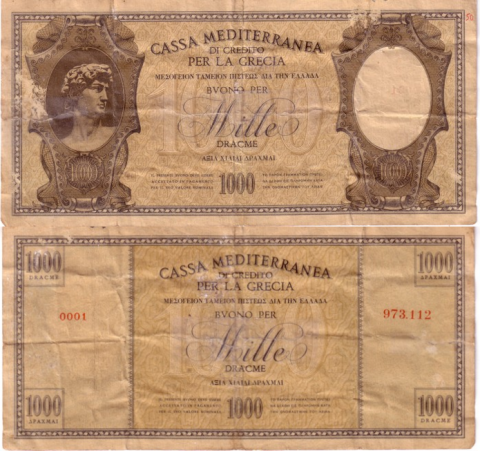
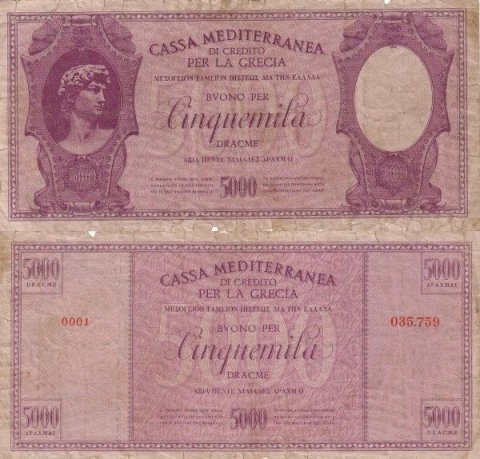

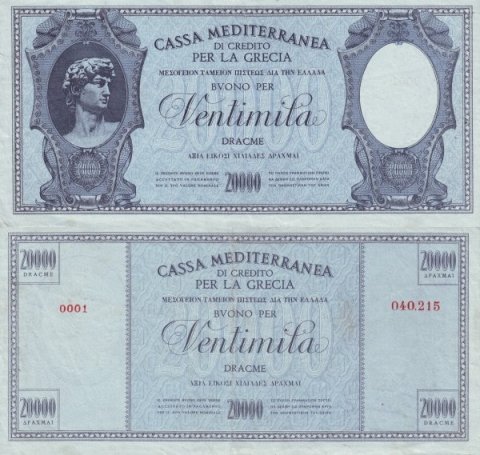
1941 – 1944 Biglietto A corso Legale Per le Isole Ionie (Italian State) 8
These Banknotes were issued by the Italian occupation forces in WW2 for use in ionian Islands.


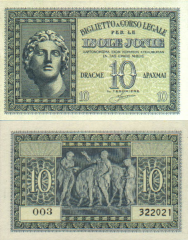
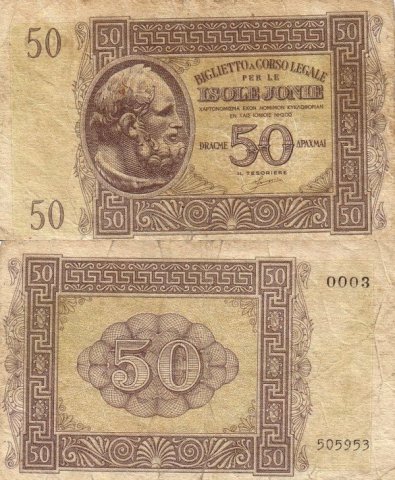


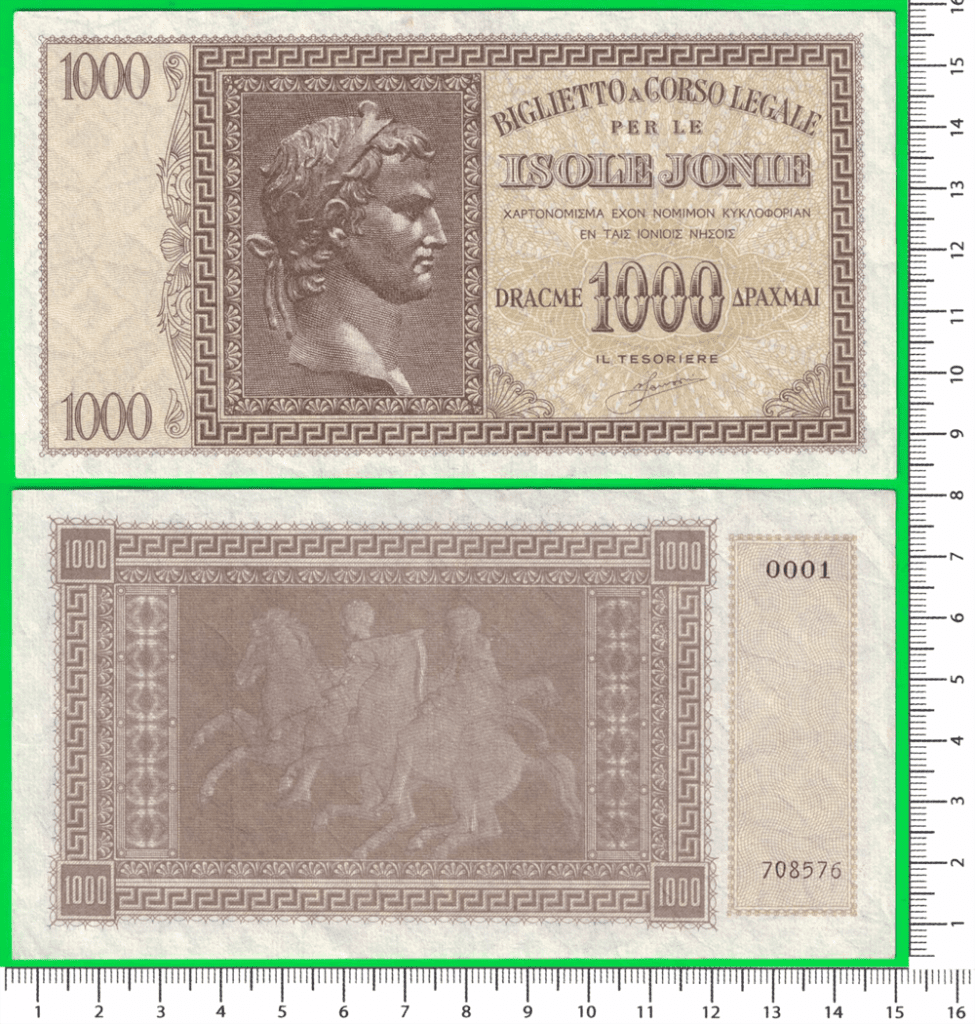


1942 – 1944 Deutsche Vermaht (German State) 4
This is not a drachma banknote, it circulated in Greece in 1944 , these state that they are not for public payment method only valid within the German armed forces, an interesting concept in that they were decoupled from German money supply and received value from the local resources the army occupied, when stamped by the greek administration were used as money in Greece, a monetary ‘half way house’
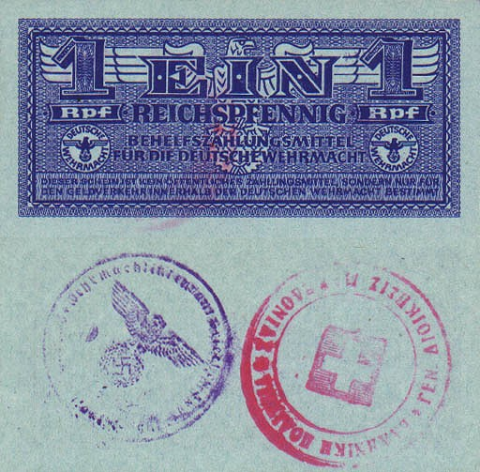
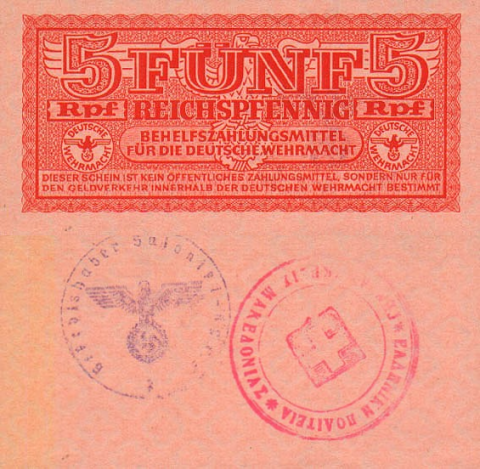
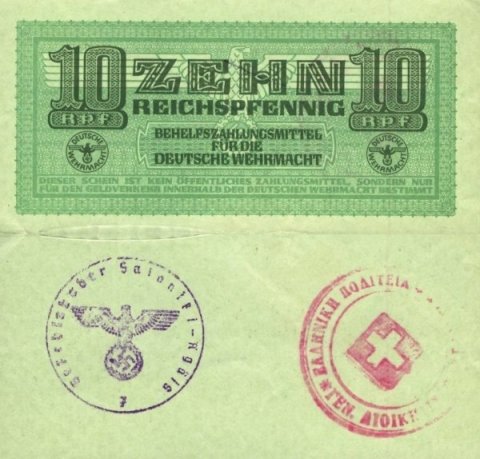
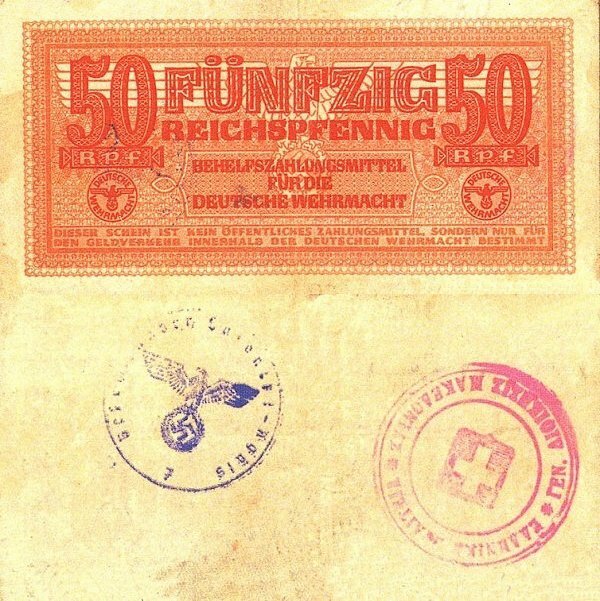


1941 – 1945 Bank Of Greece 56
This section covers the WW2 period with increasingly cheaper paper and inflationary issues, in 1943 the drachma devaluation was x 100, 5.000dr became 500.000, then in 1944 there was another 100x devaluation 500.00dr became 500.000.000 🙂 creeping up by yet another 100x devaluation, joy! everyone was a multibillionaire (time to repay drachma denominated debt, let em keep the change big man… :), by the end of the year devaluations were reversed.
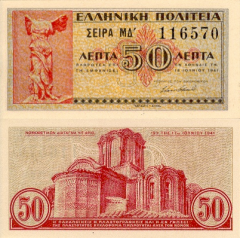
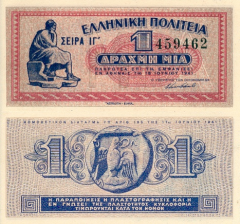
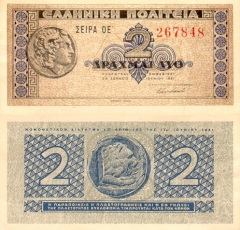
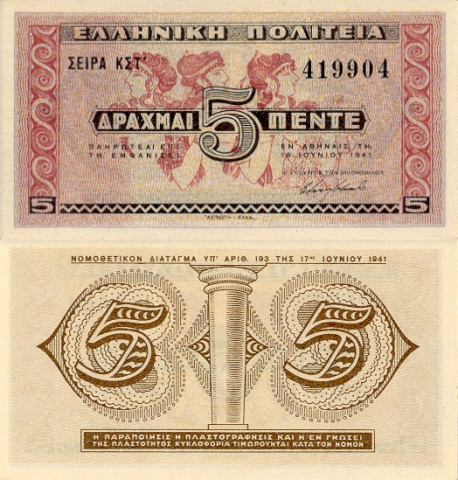
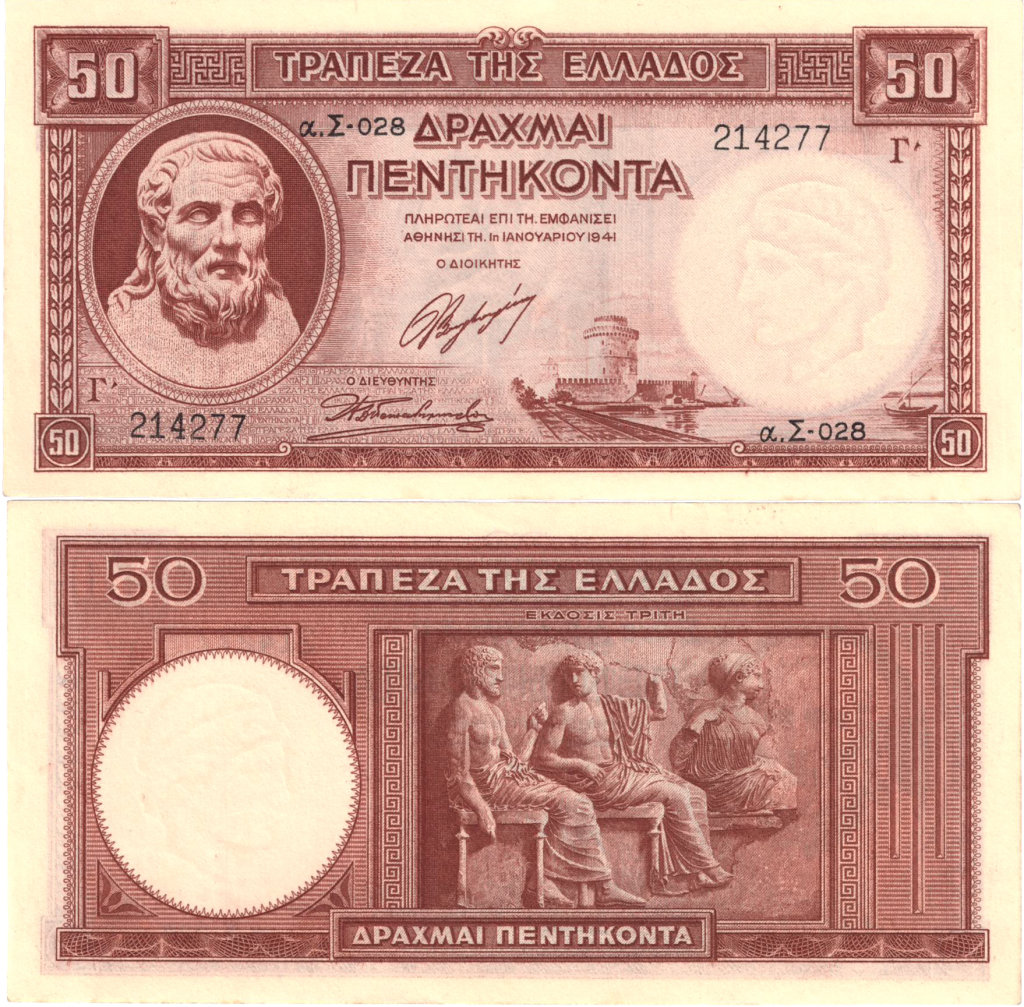
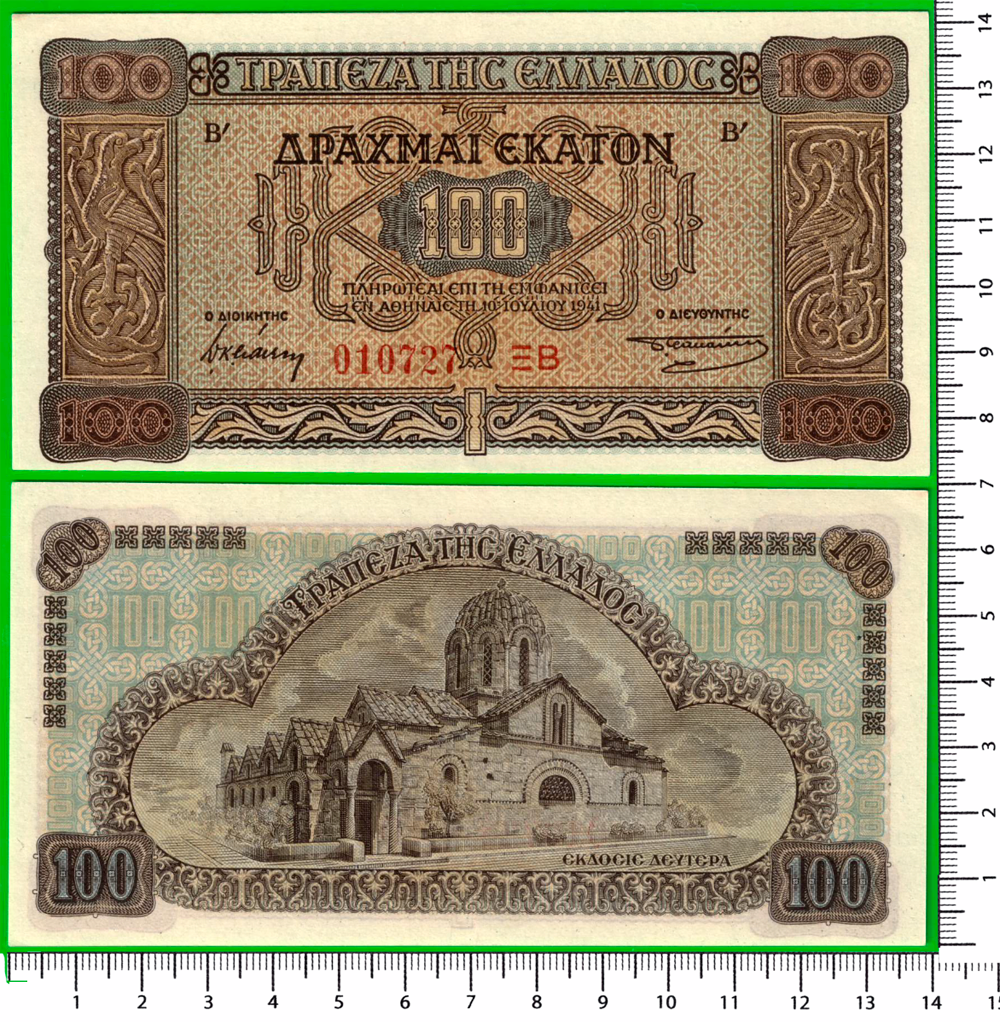

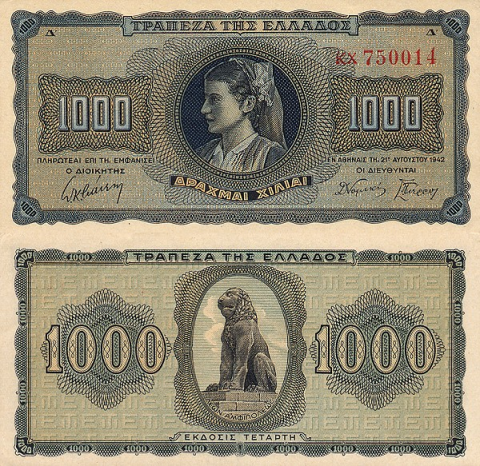
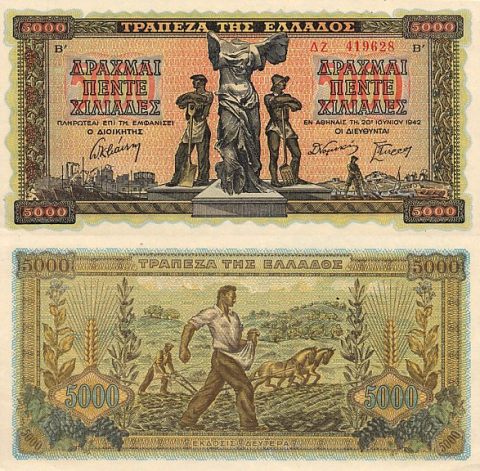
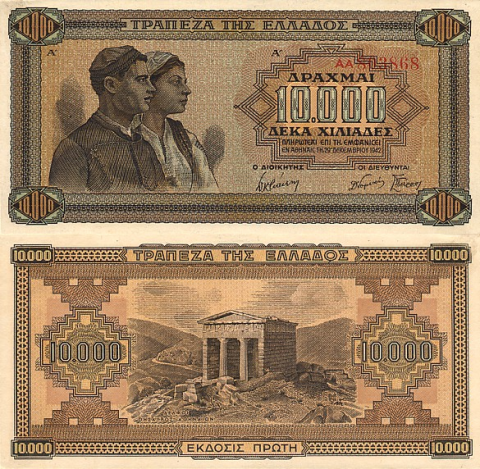

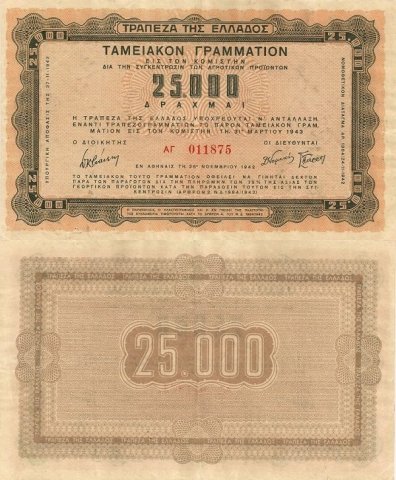
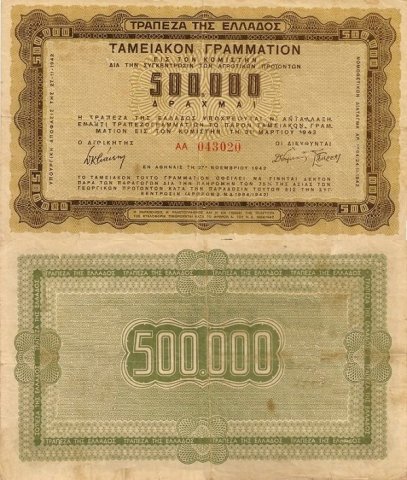

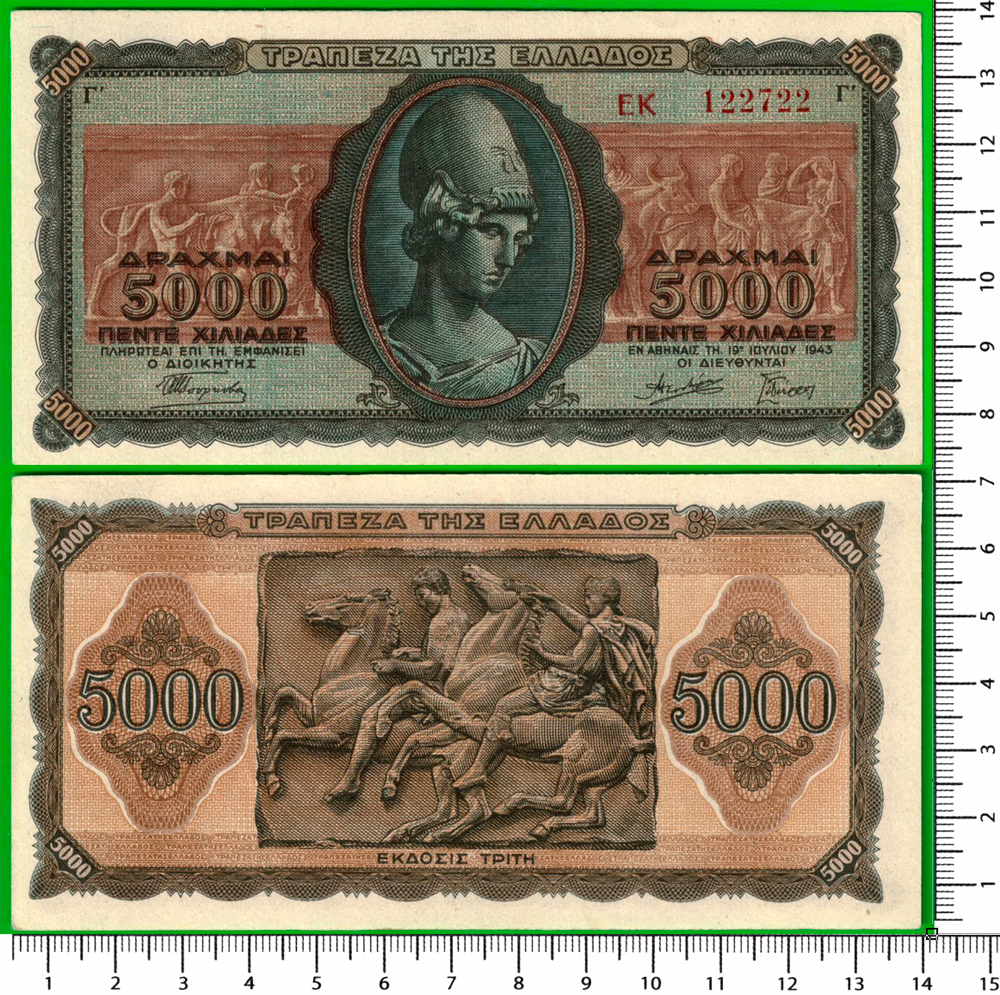

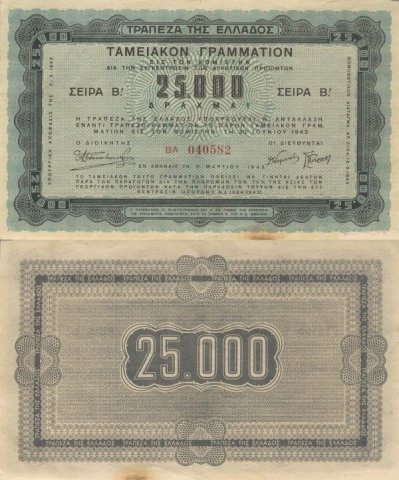
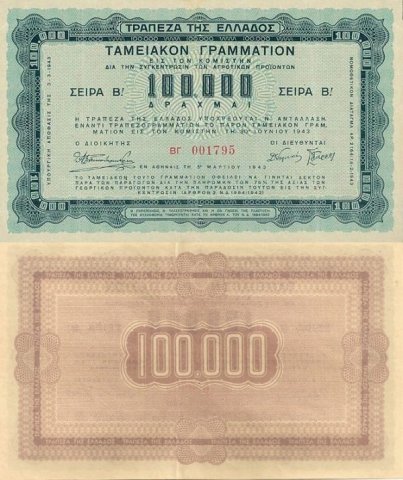
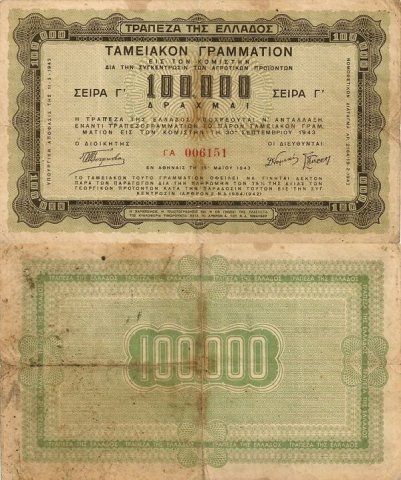
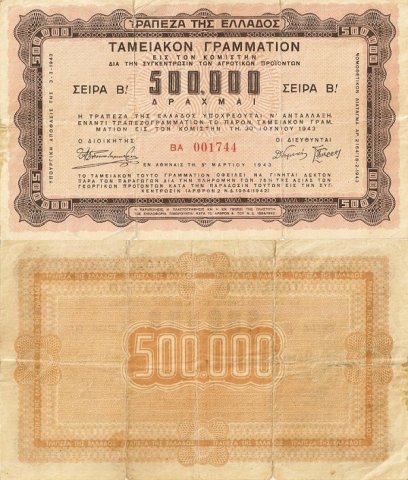



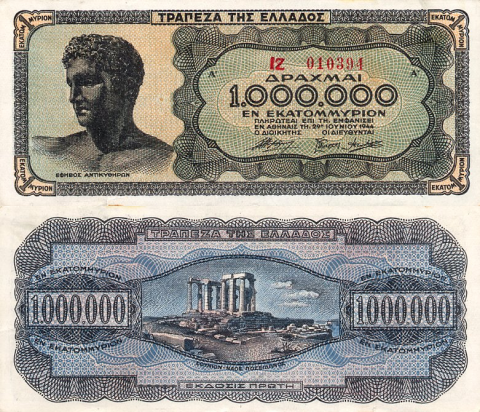
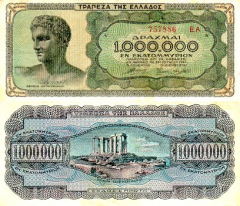

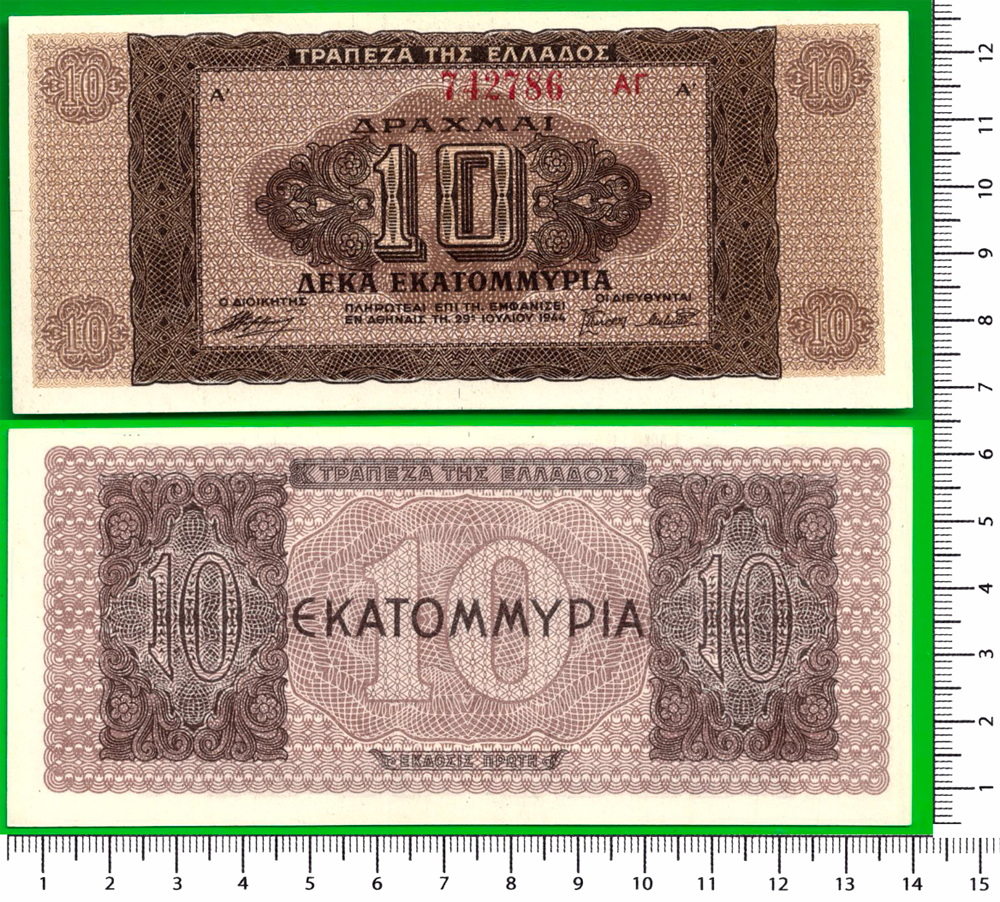
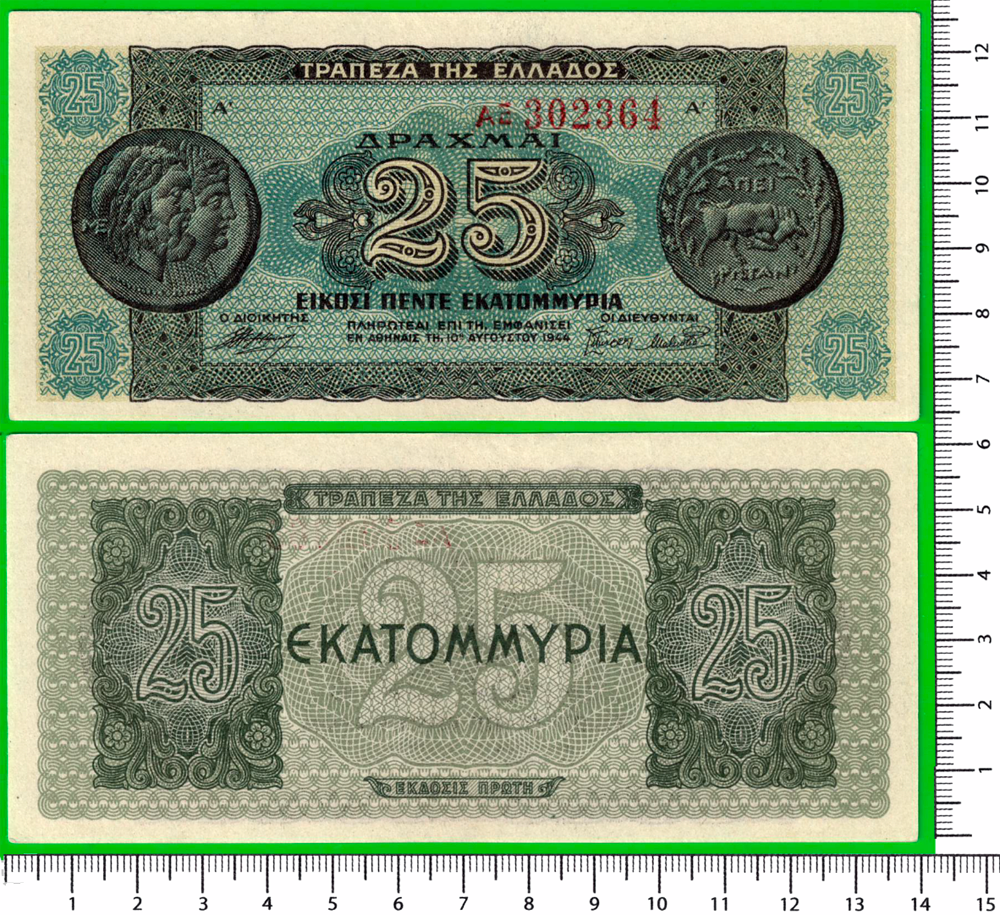

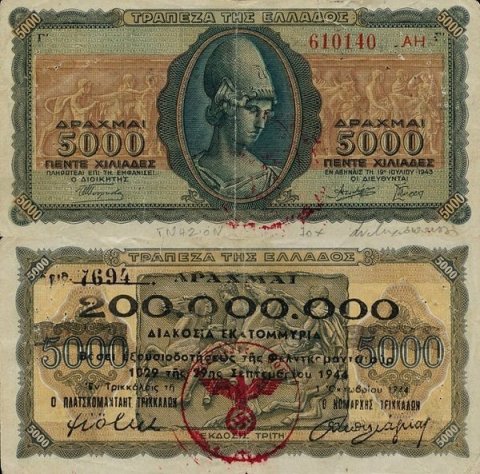
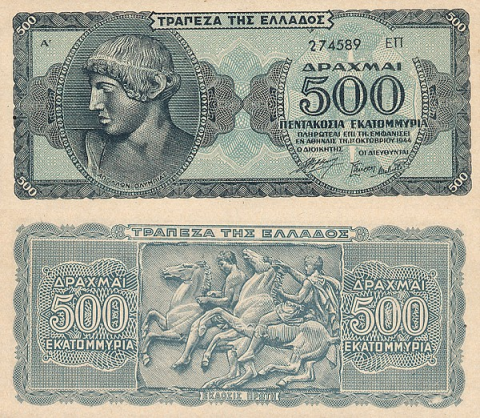
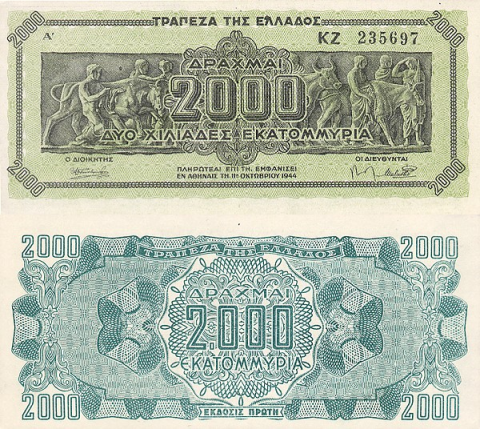
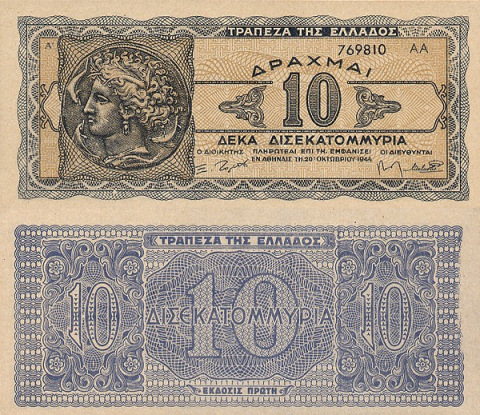
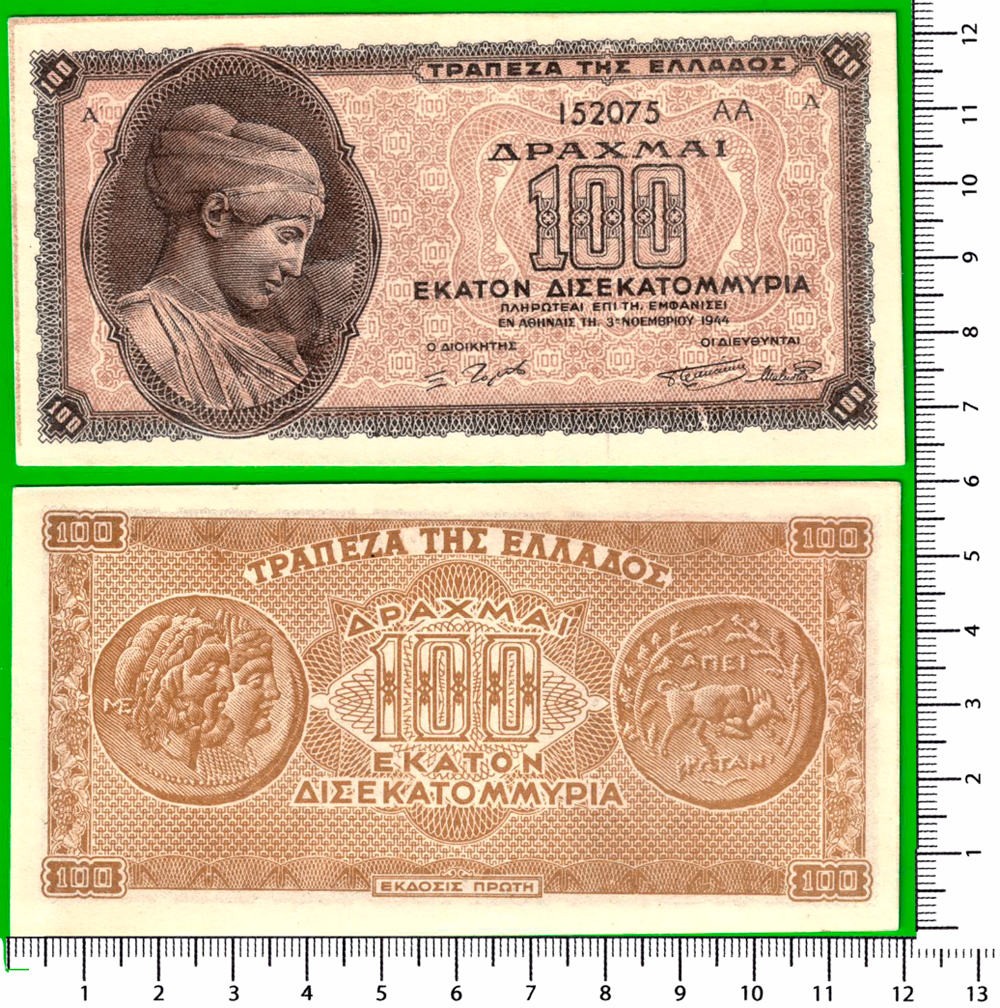
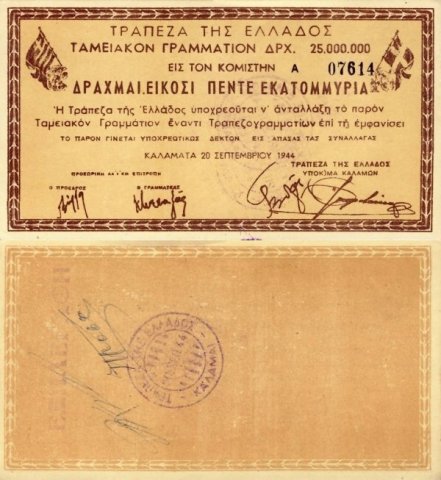
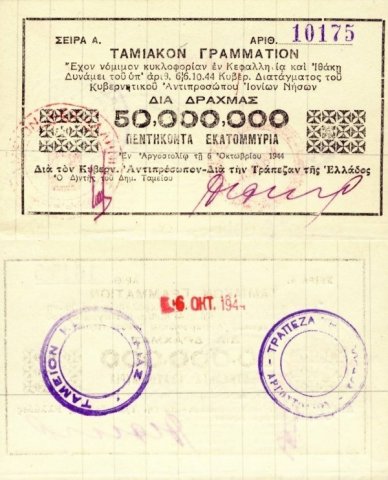

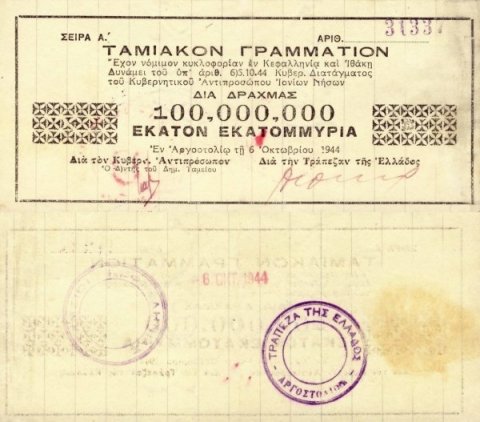
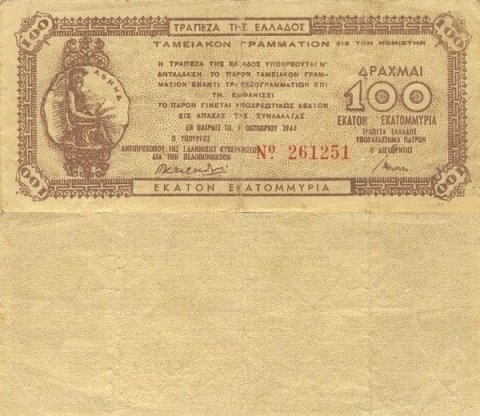

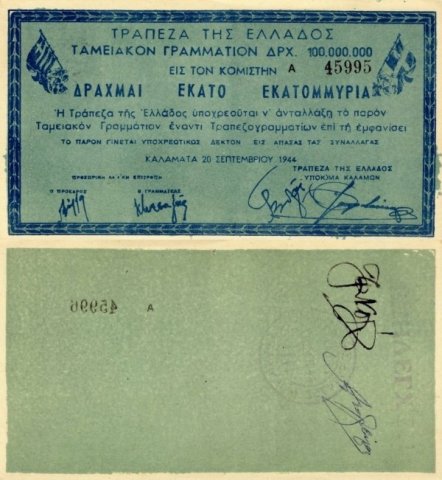

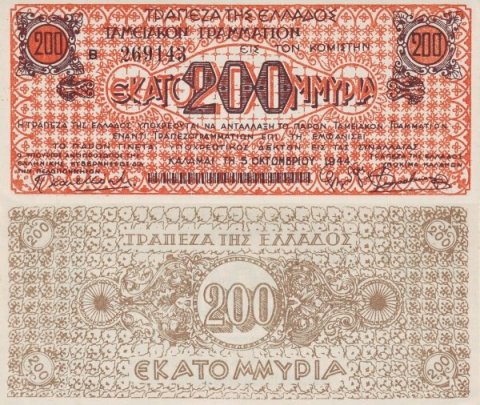
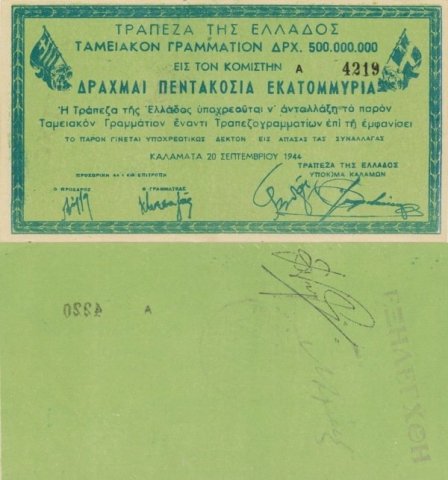



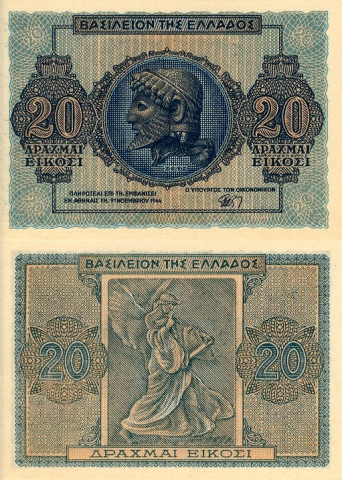
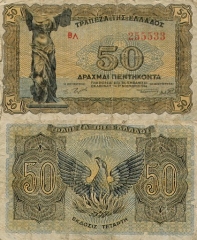

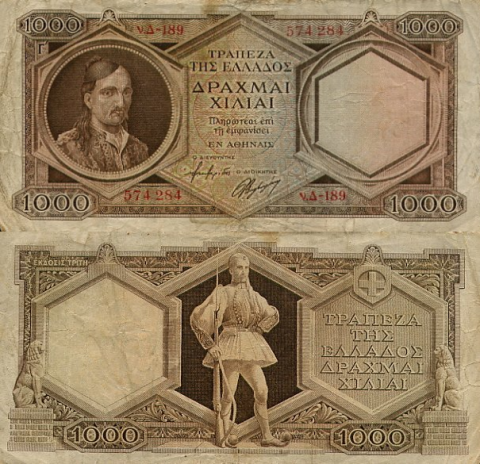

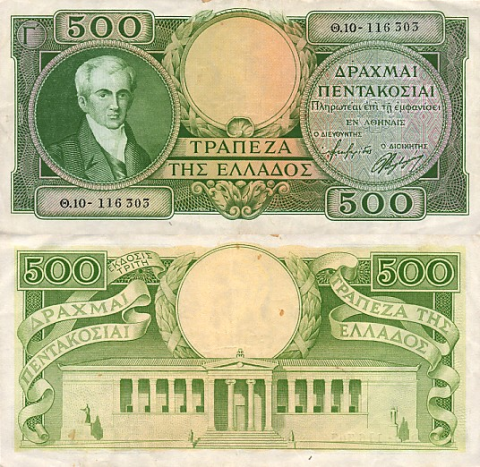
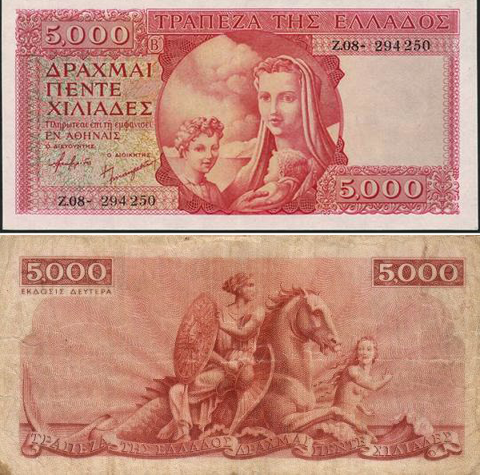
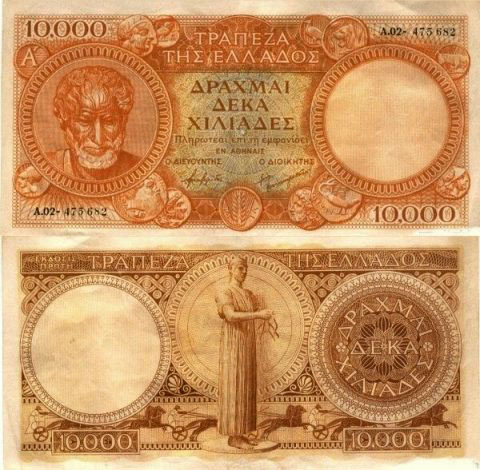

1944 National liberation PolitBureux (WW2 communist resistance) 3
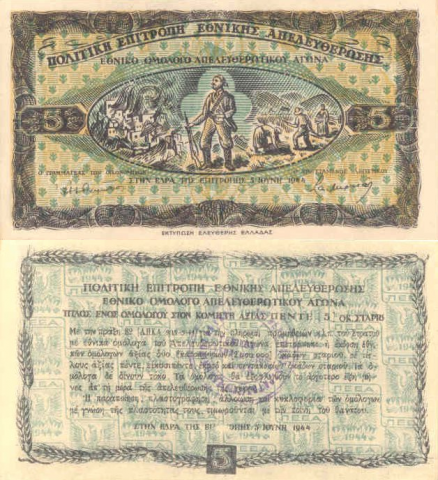
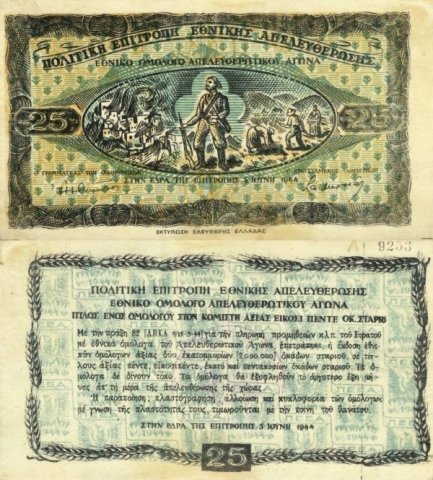

1946 – 1949 Bank Of Greece 8
Following WW2 there was civil war in Greece (beginnings of cold war between west and communist states) .
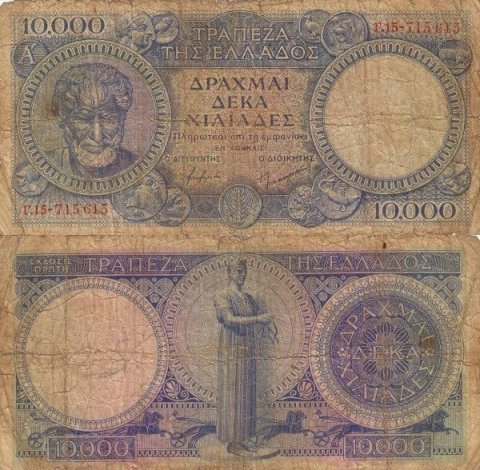

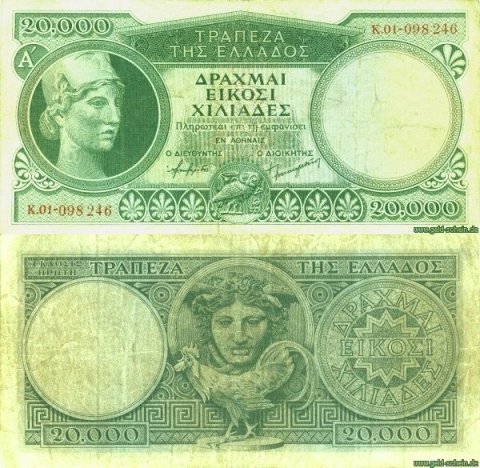
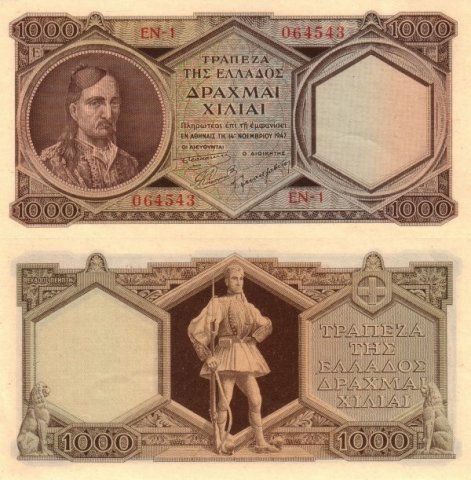

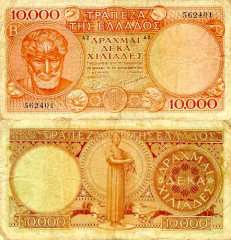
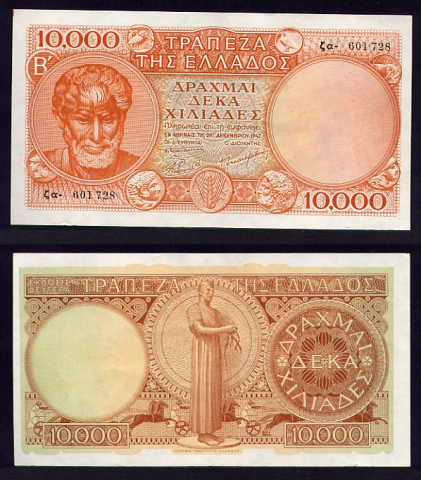


1950- 2002 Bank Of Greece 38

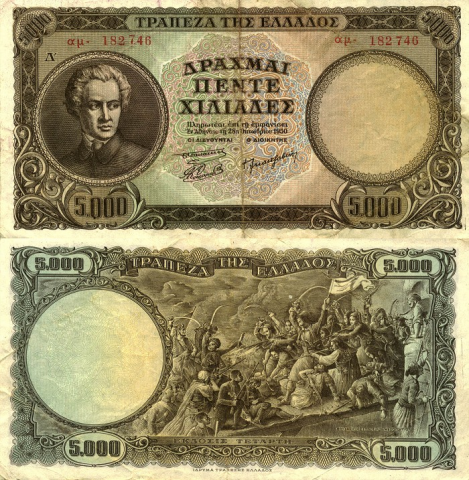
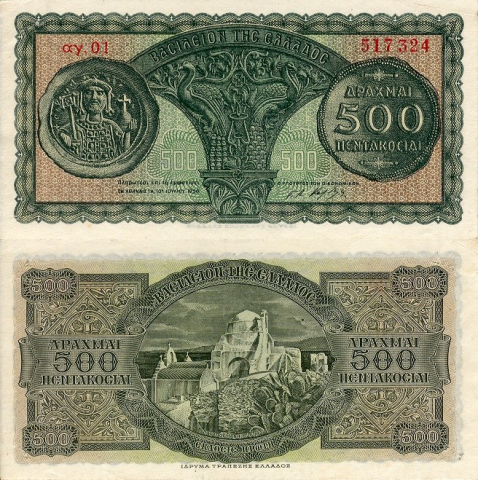
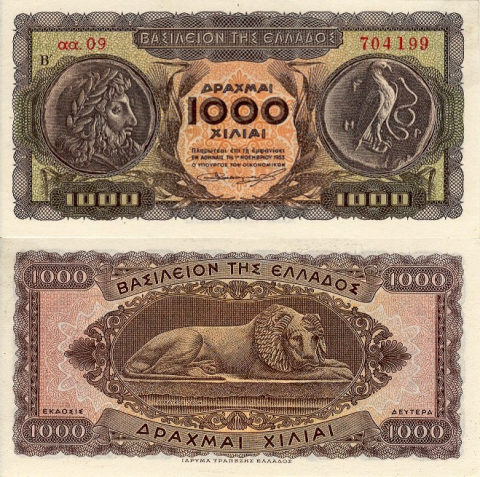
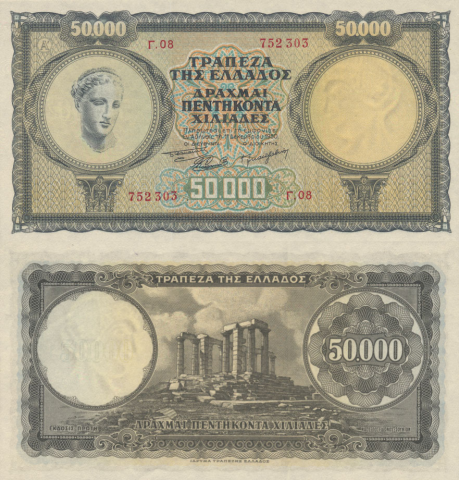
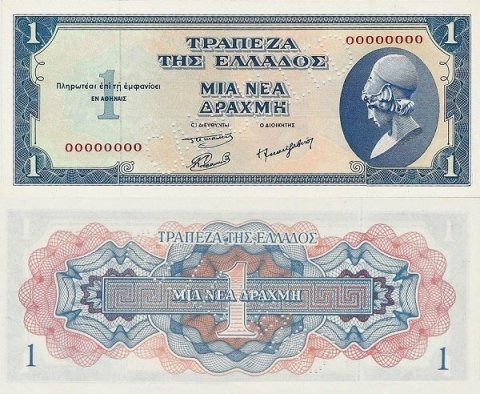





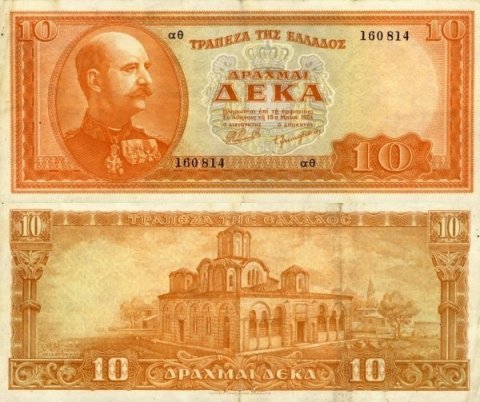

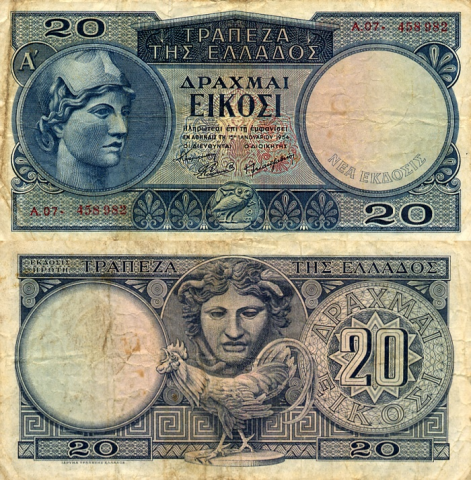
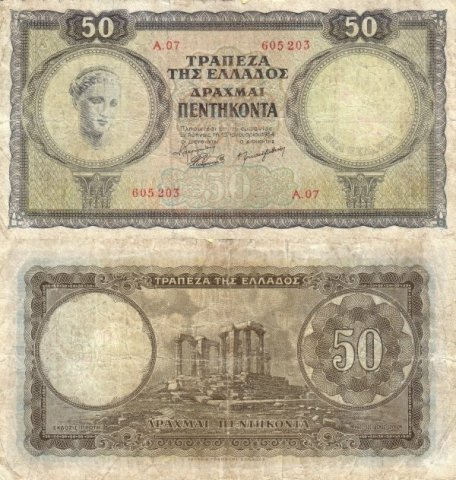
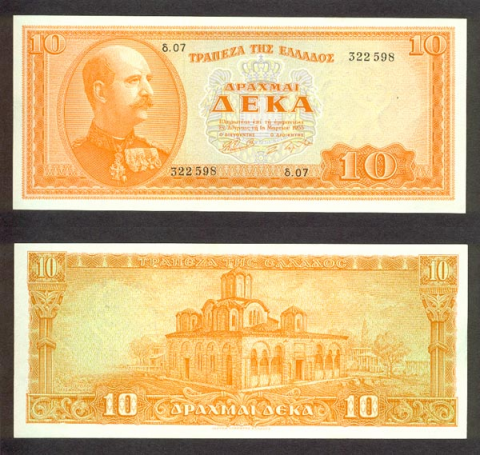
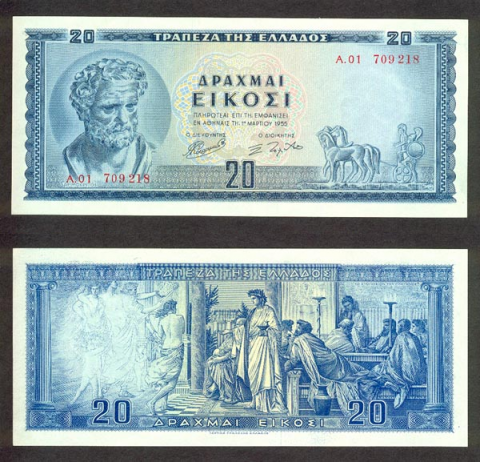
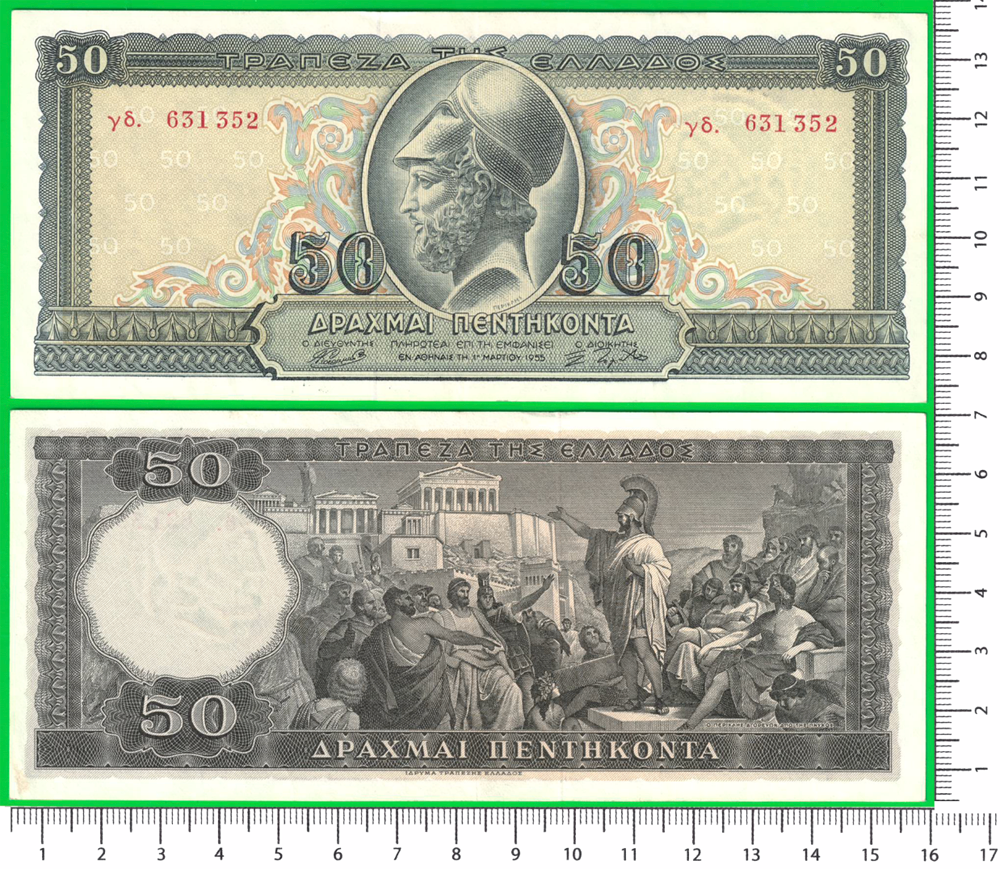
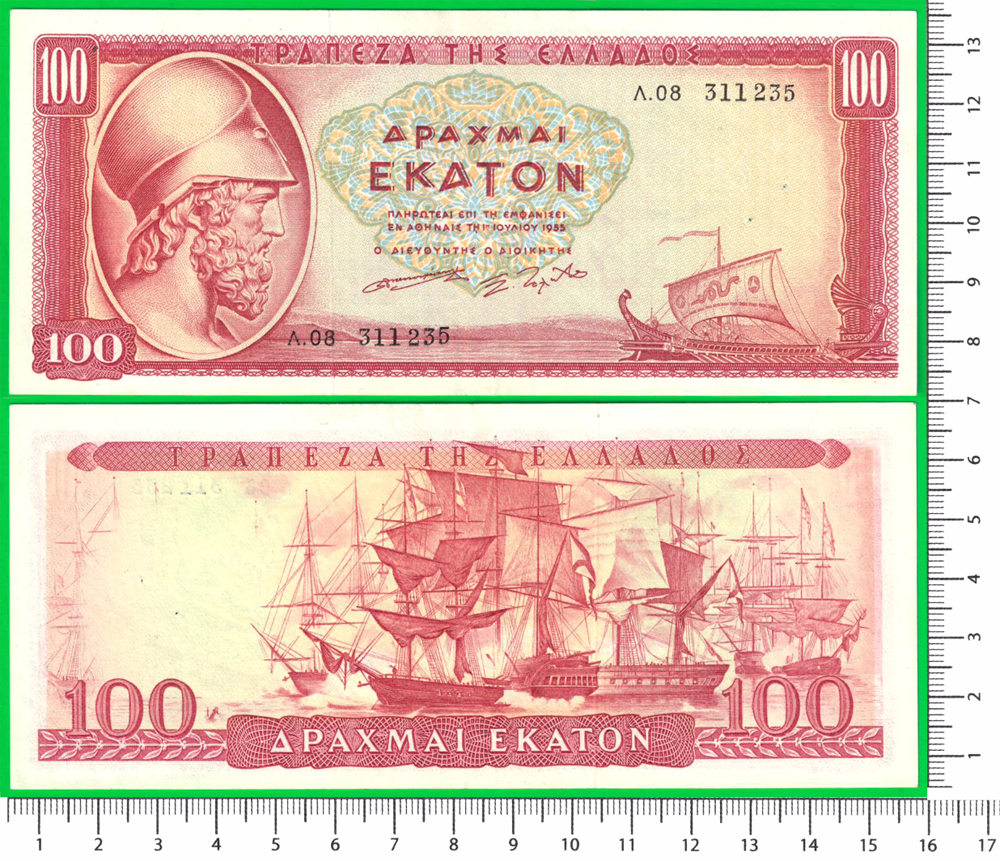
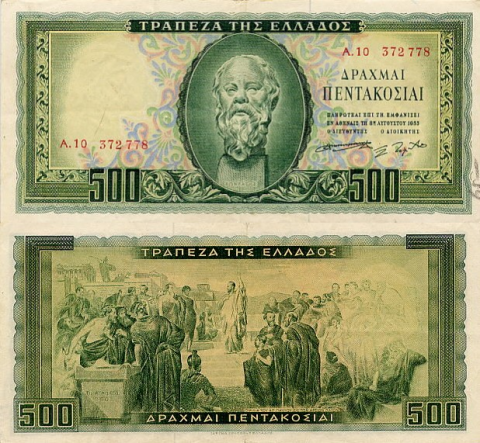




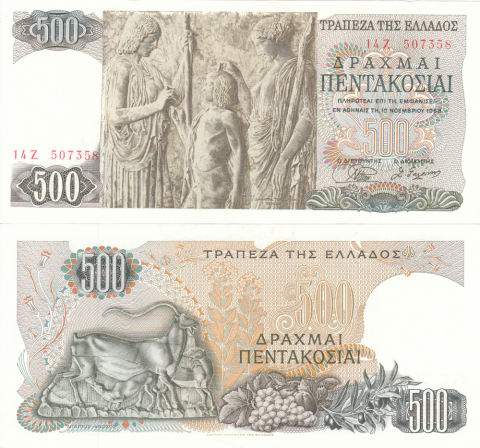
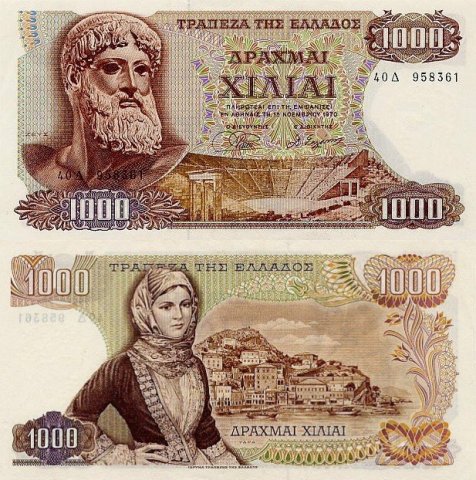



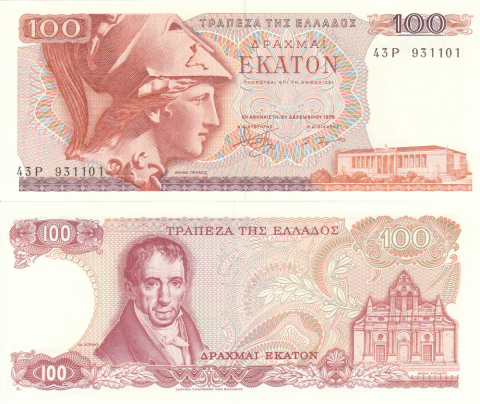
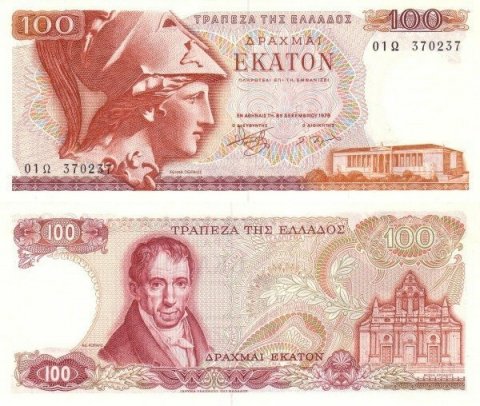
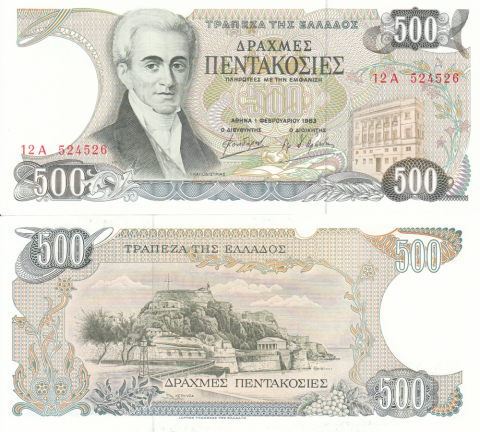
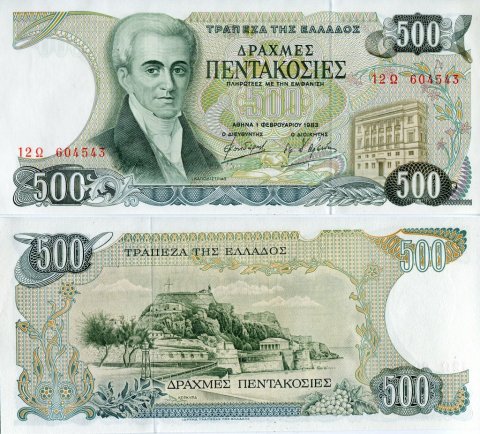
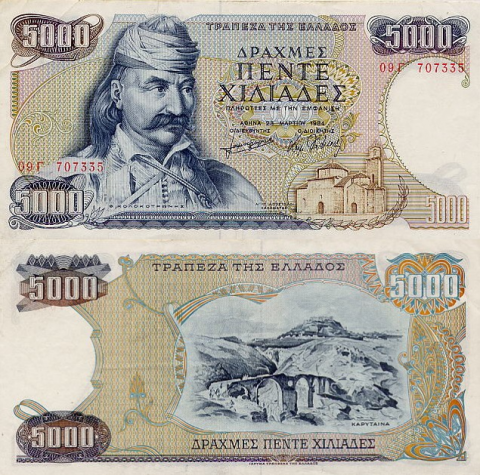
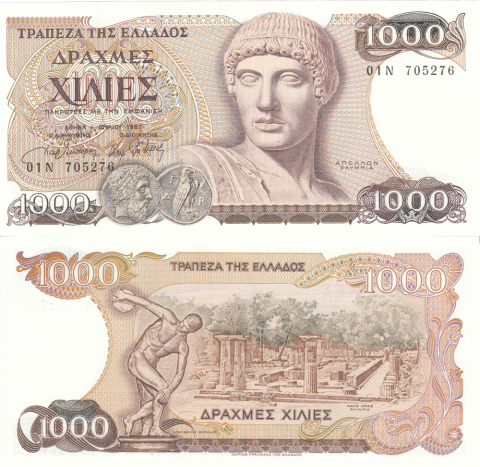

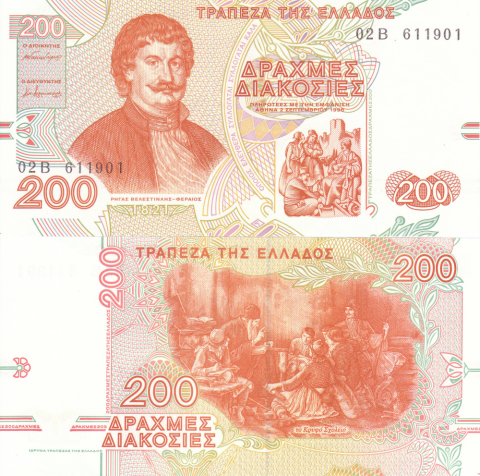


The End €
On 1 January 2002 the Drachma was replaced by the Euro which rests on very shaky foundations (2019) and is likely to be replaced itself in the not too distant future.
The end of this section of our Financial Art Collections


